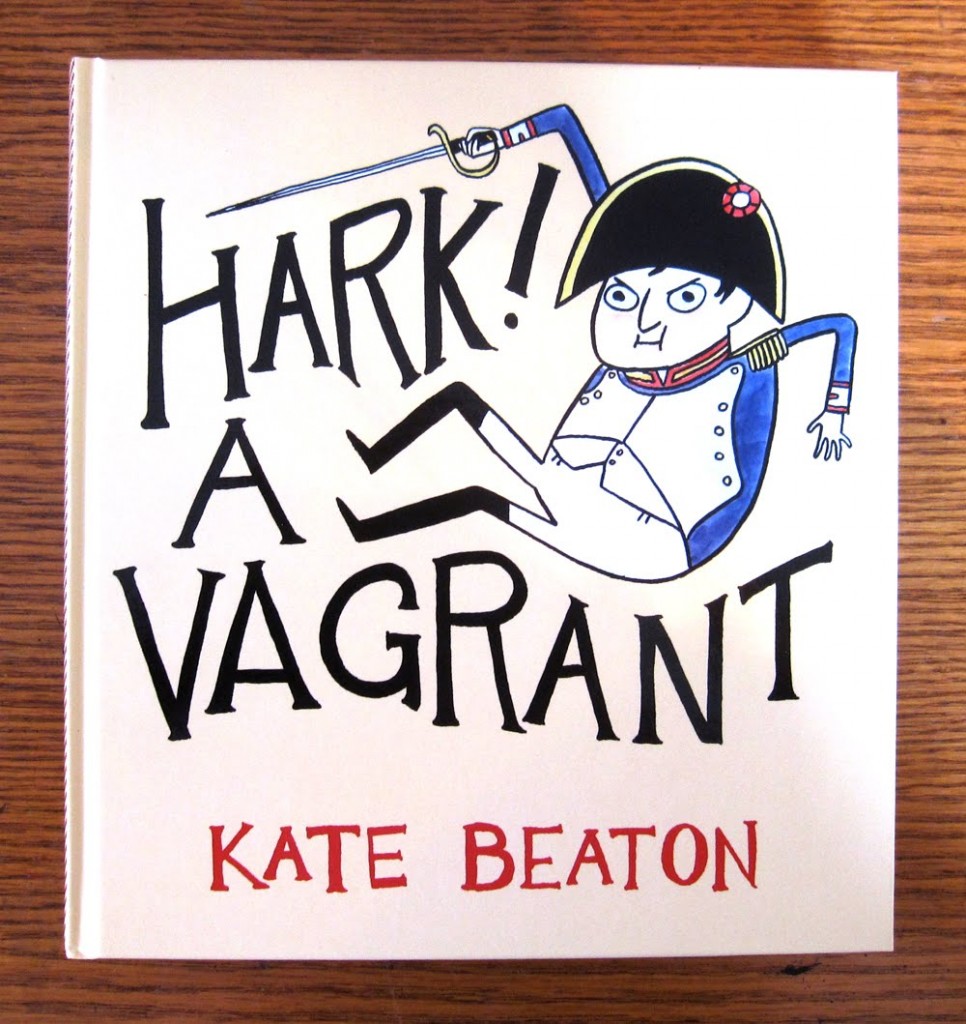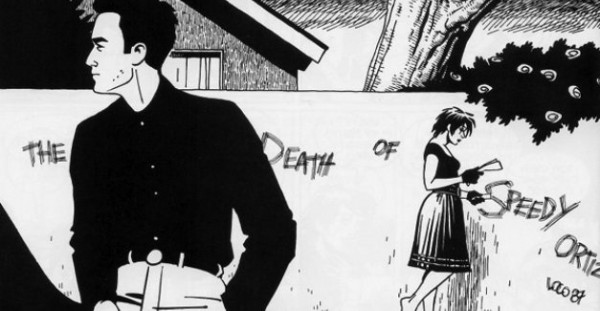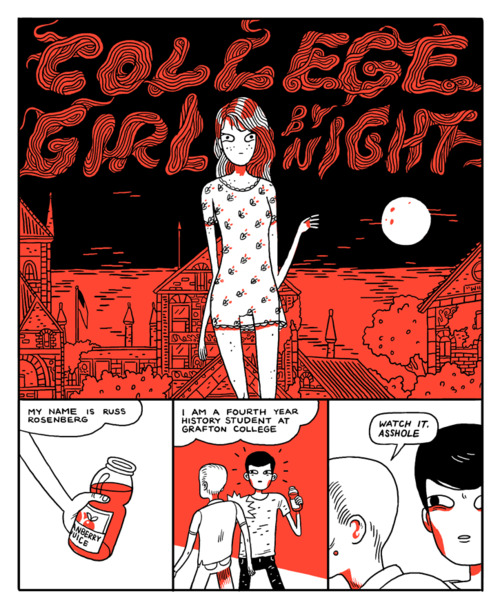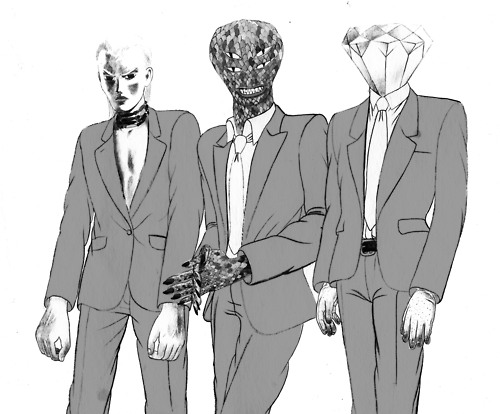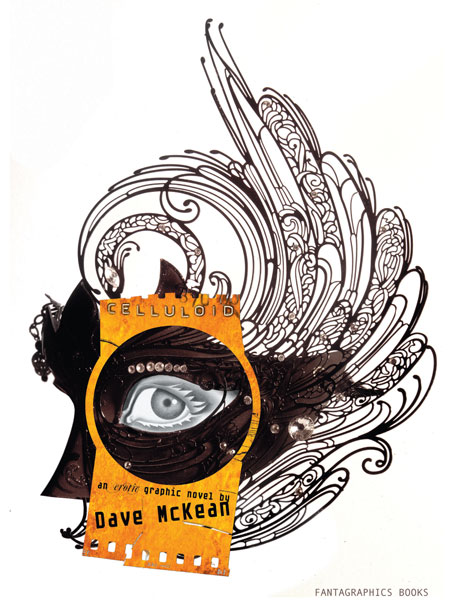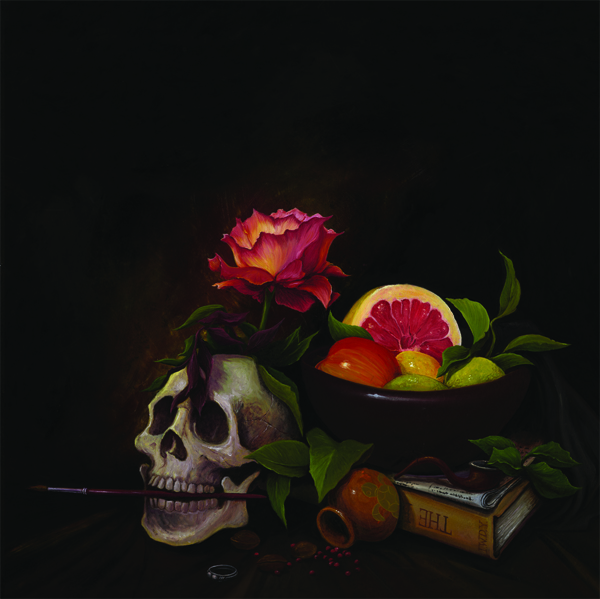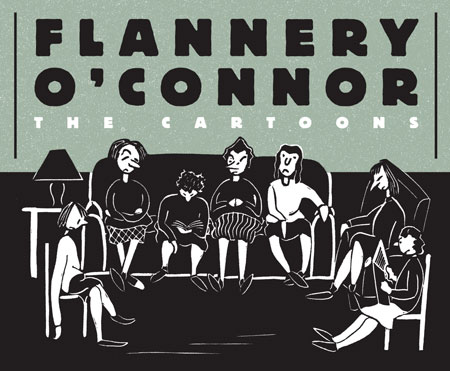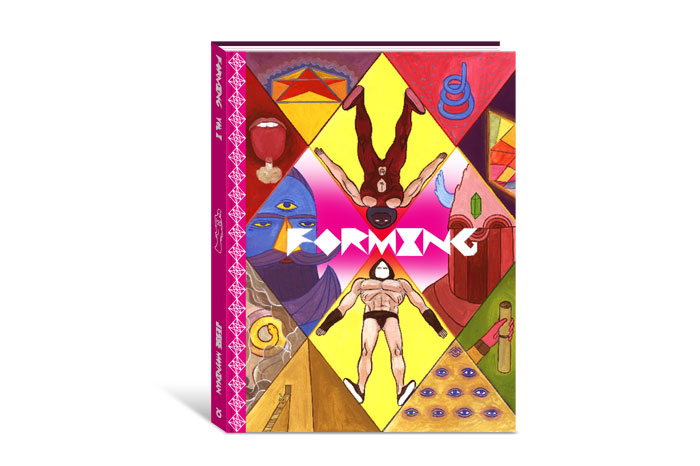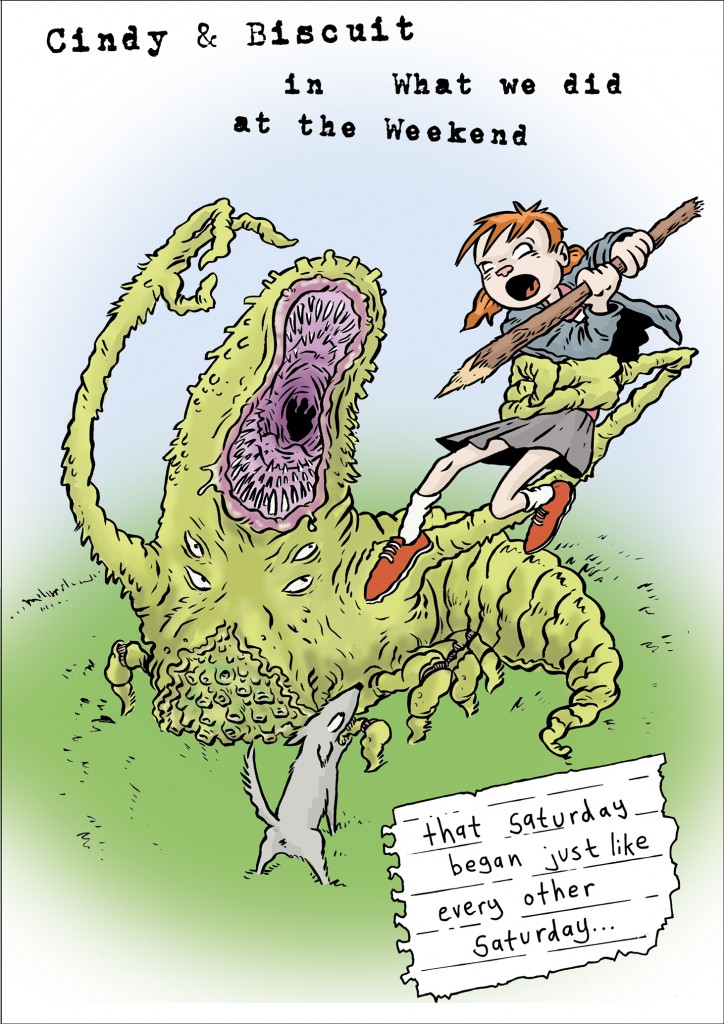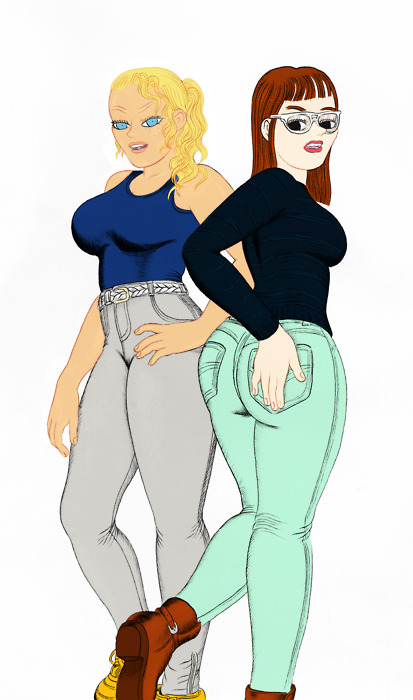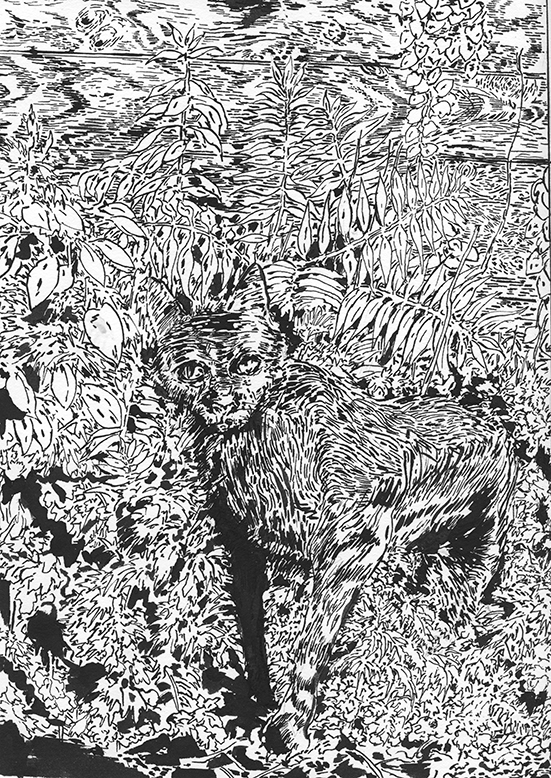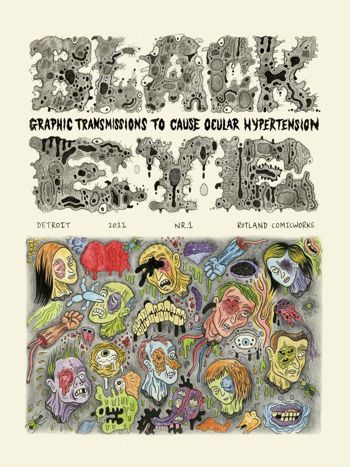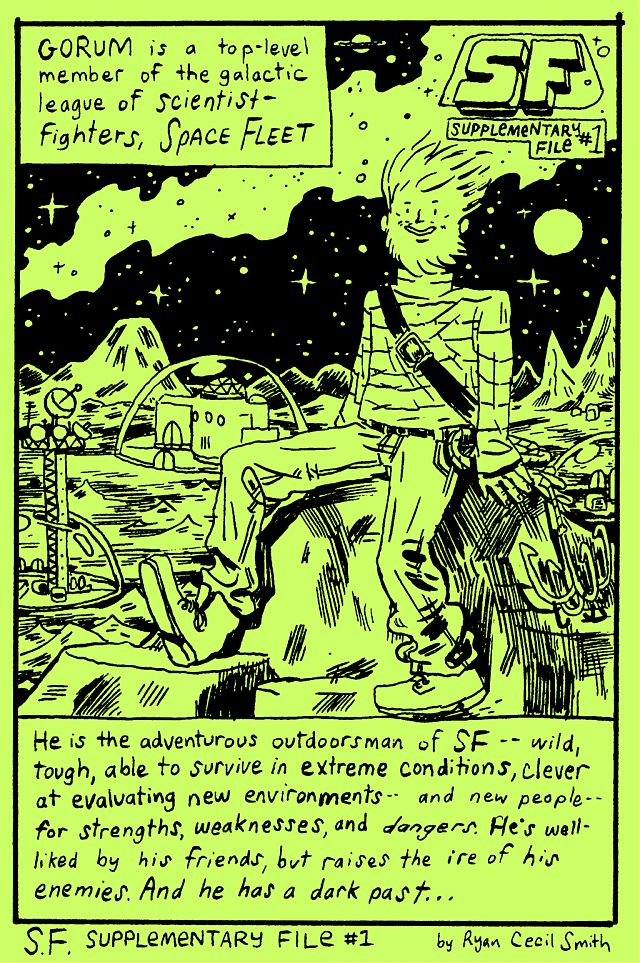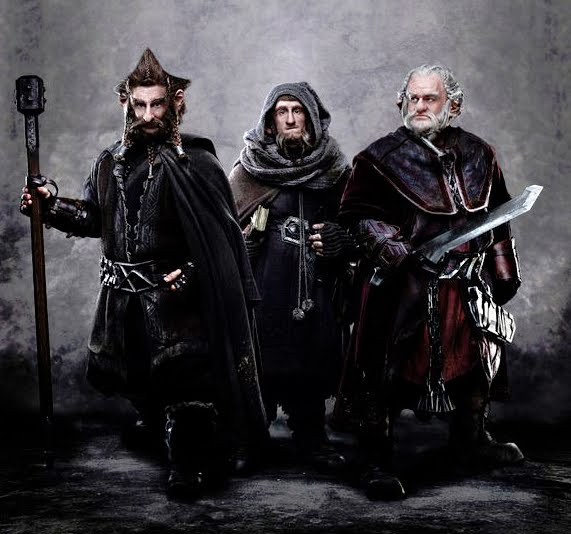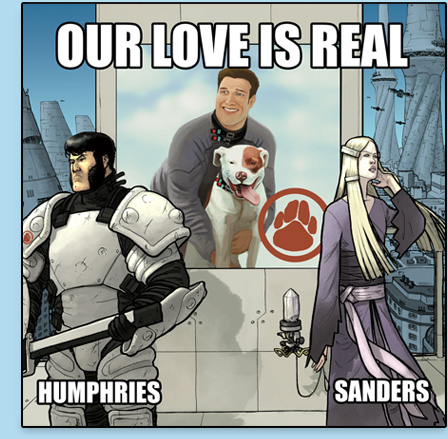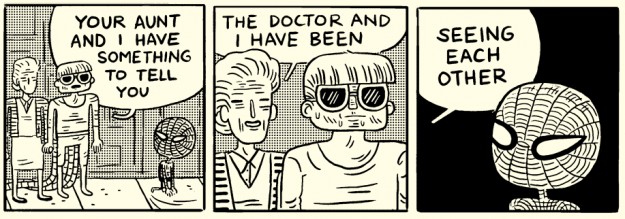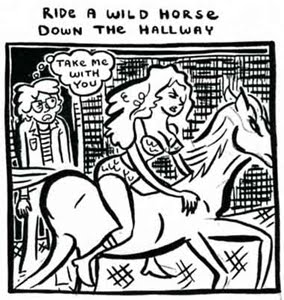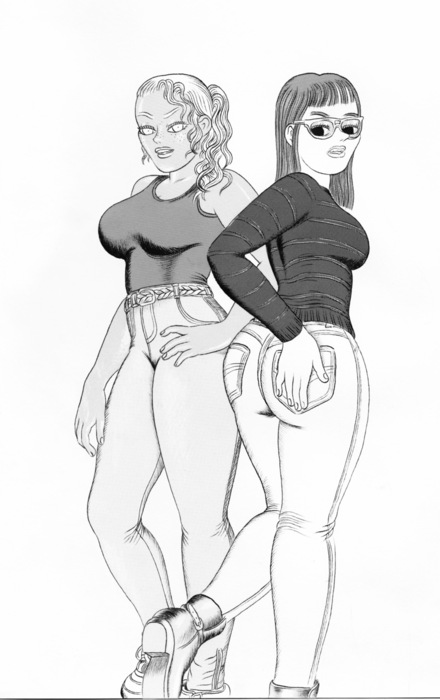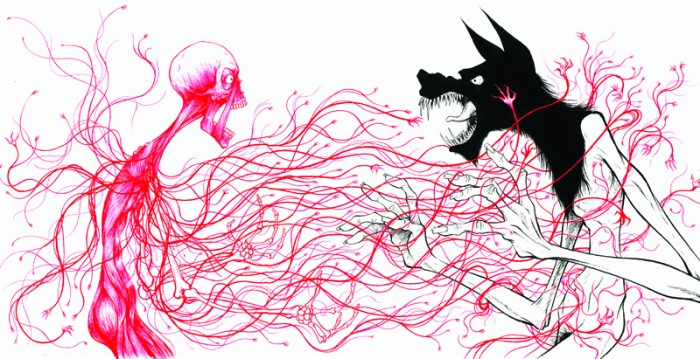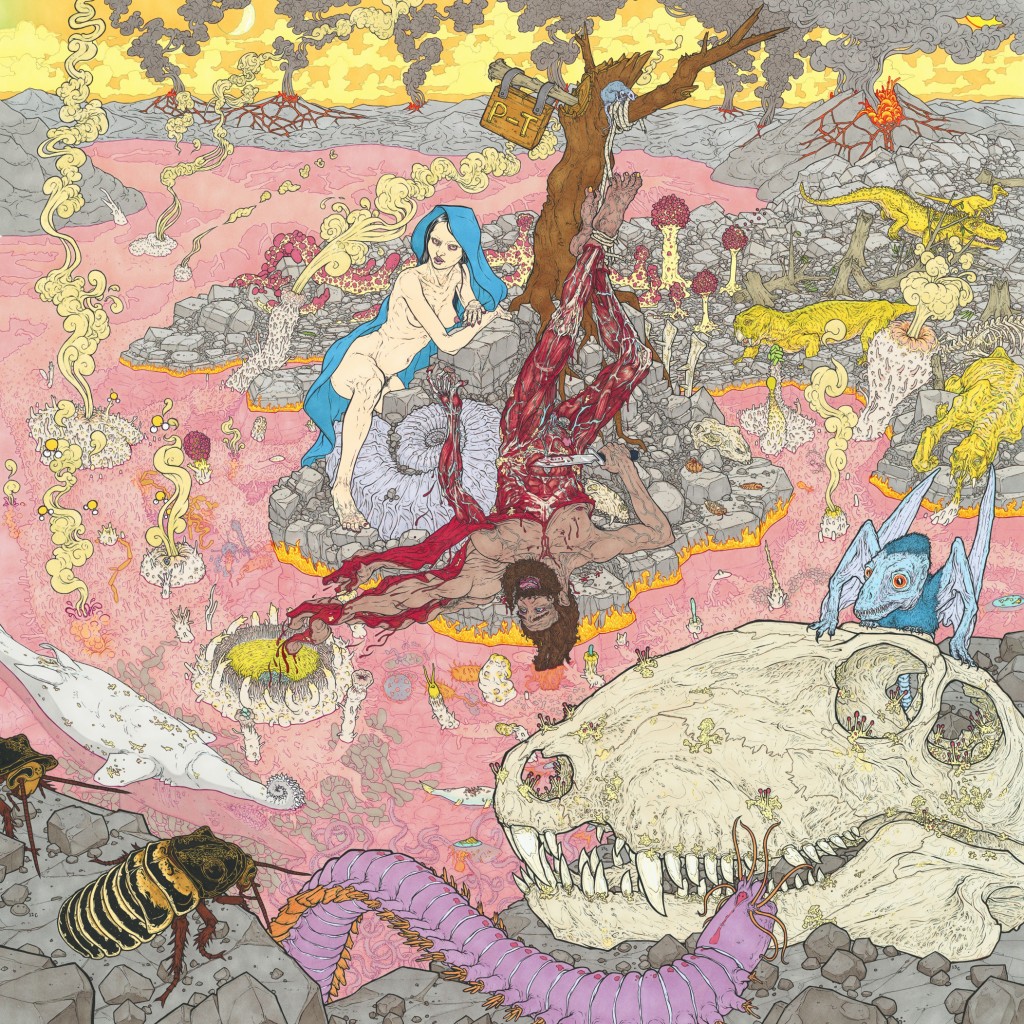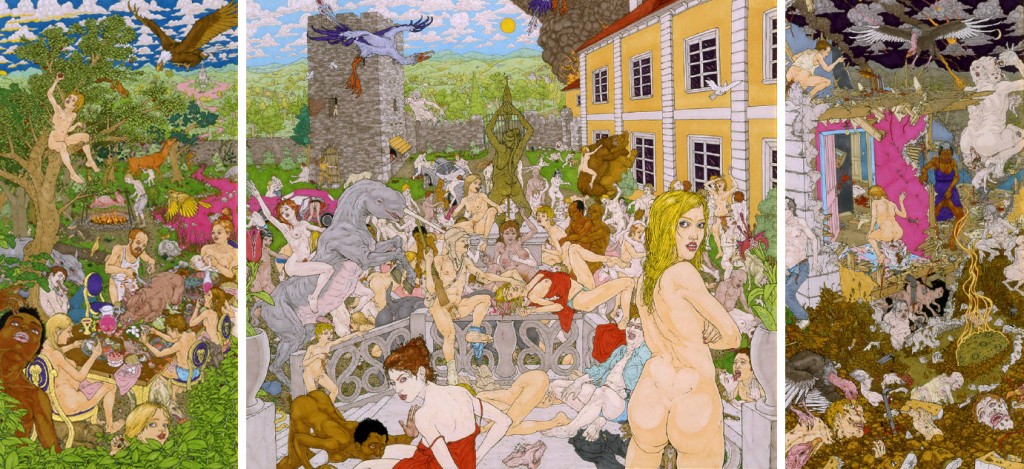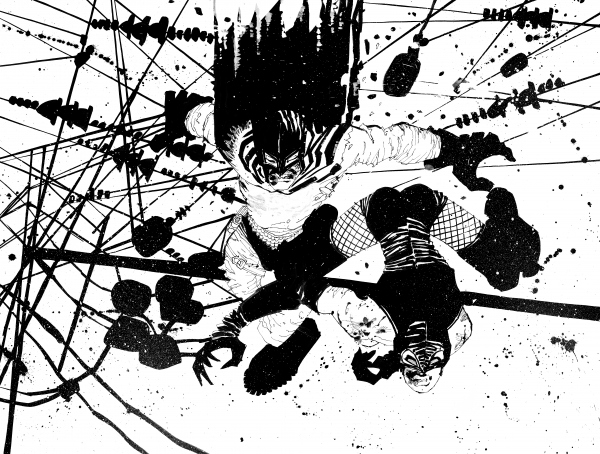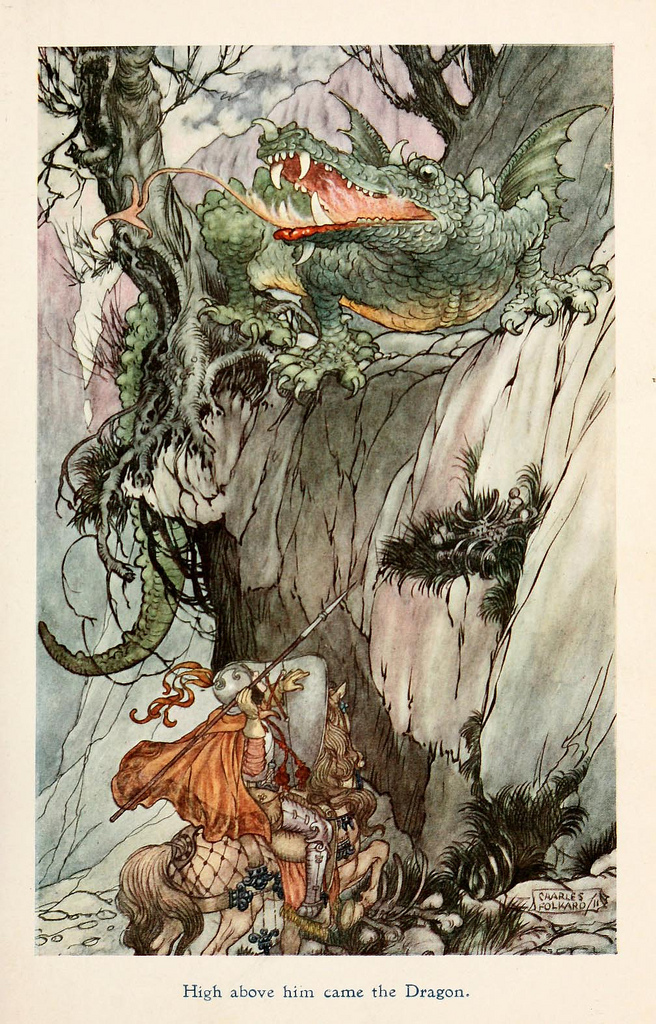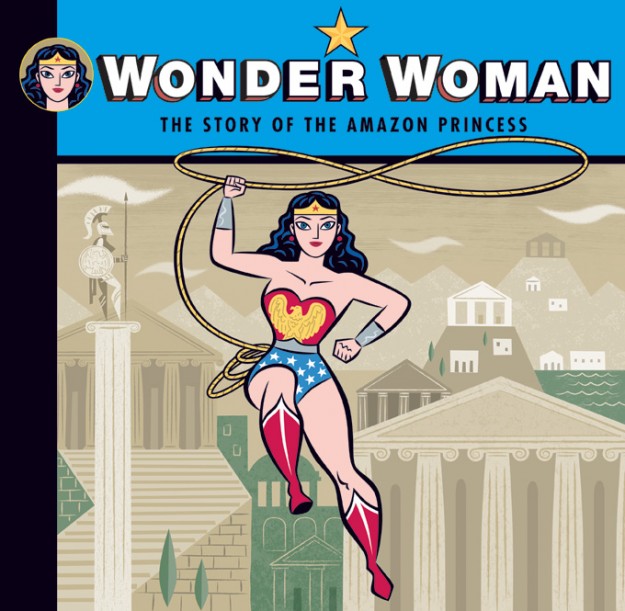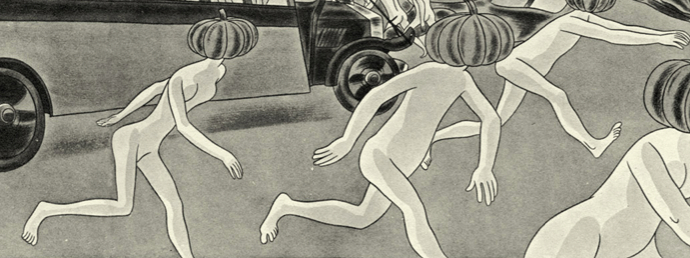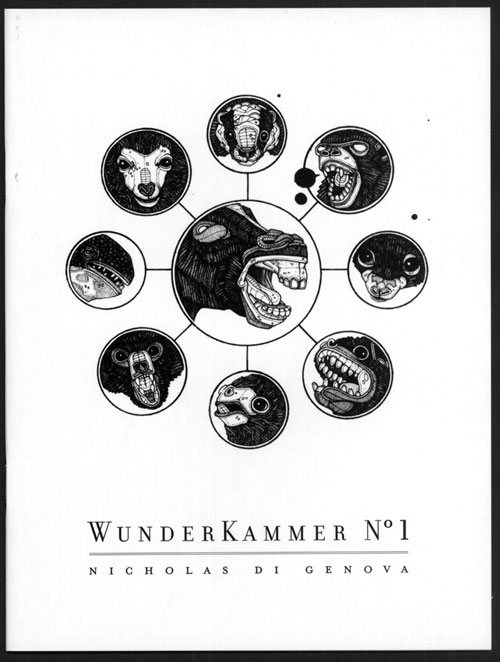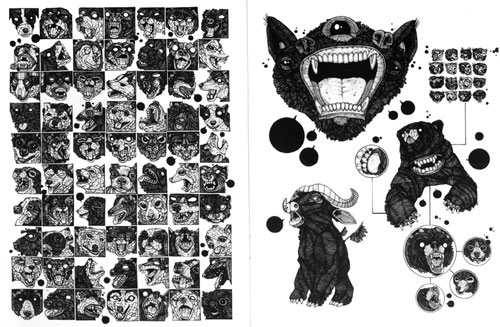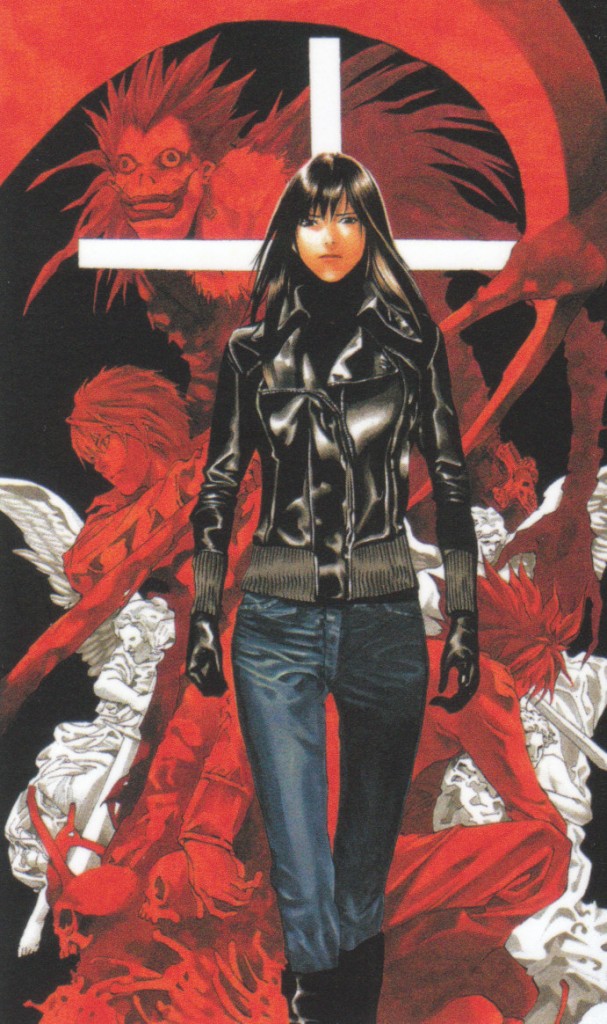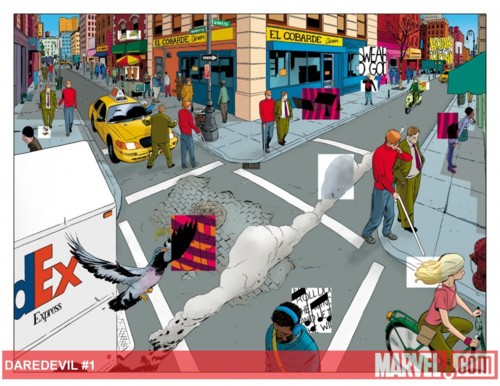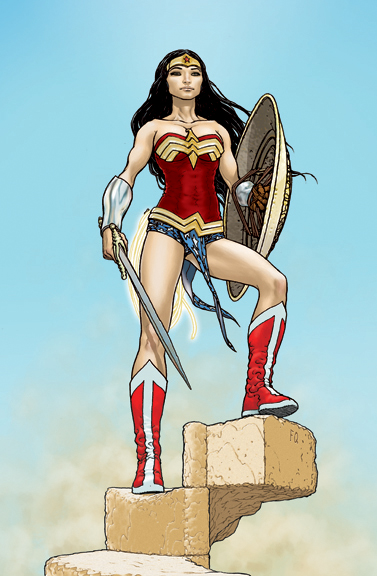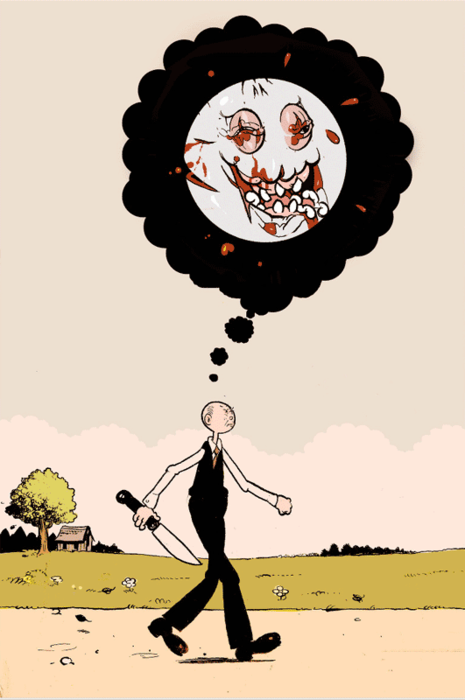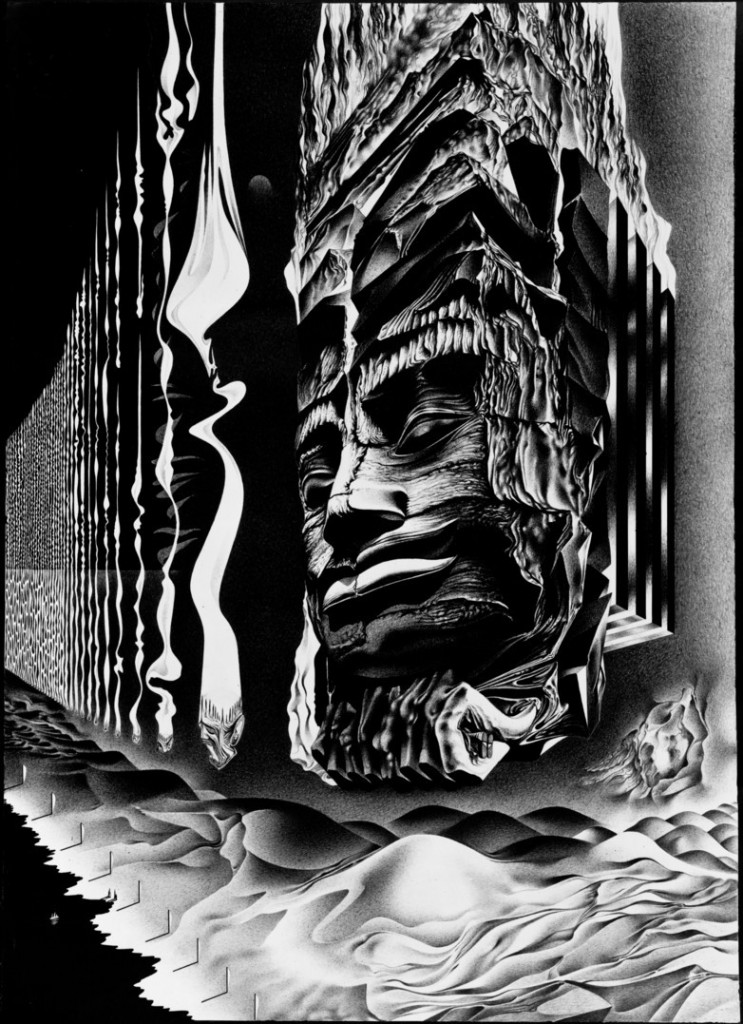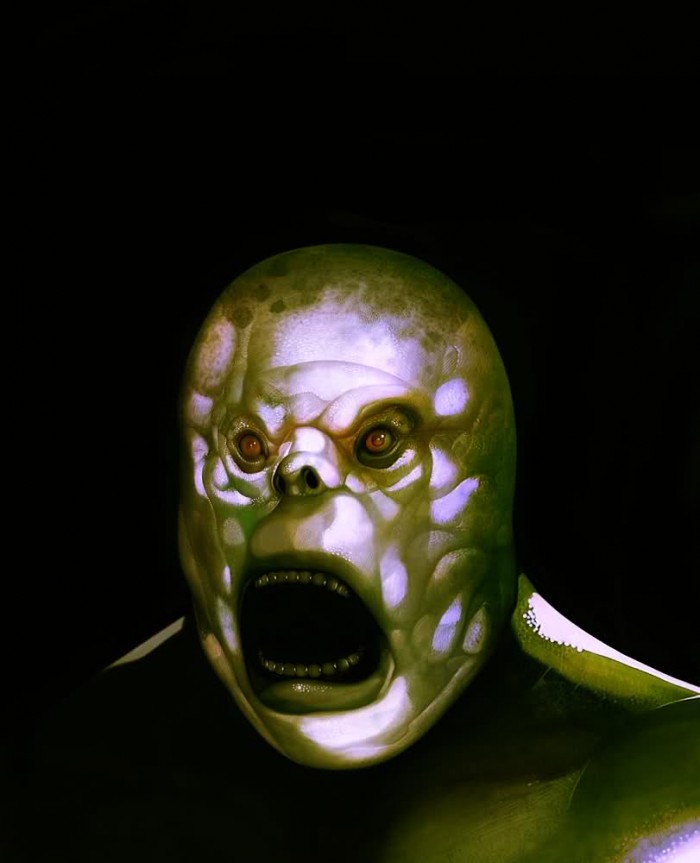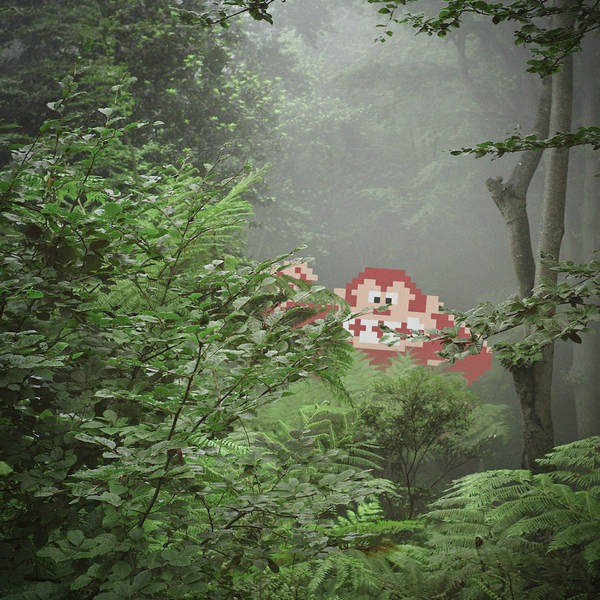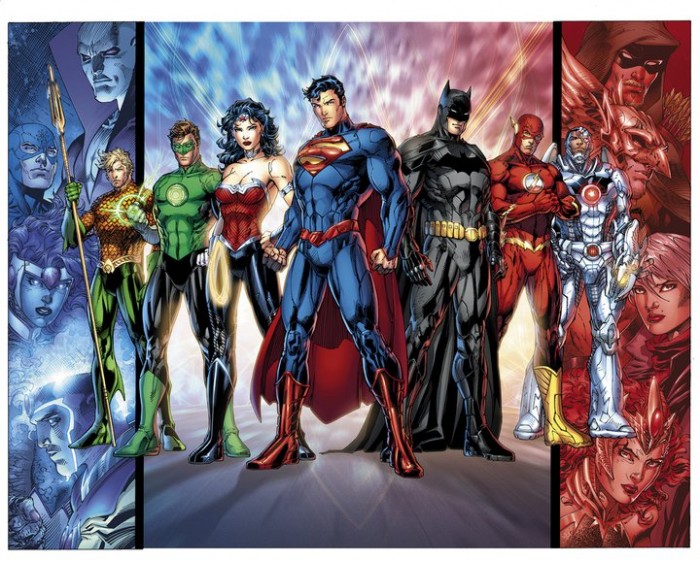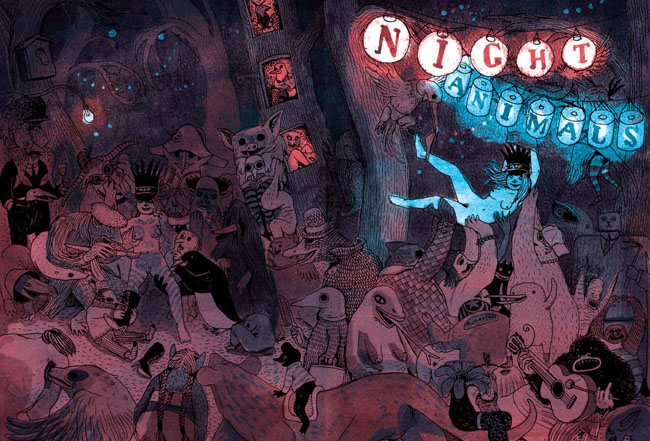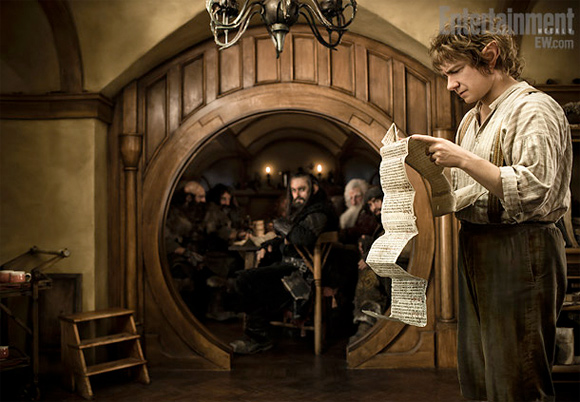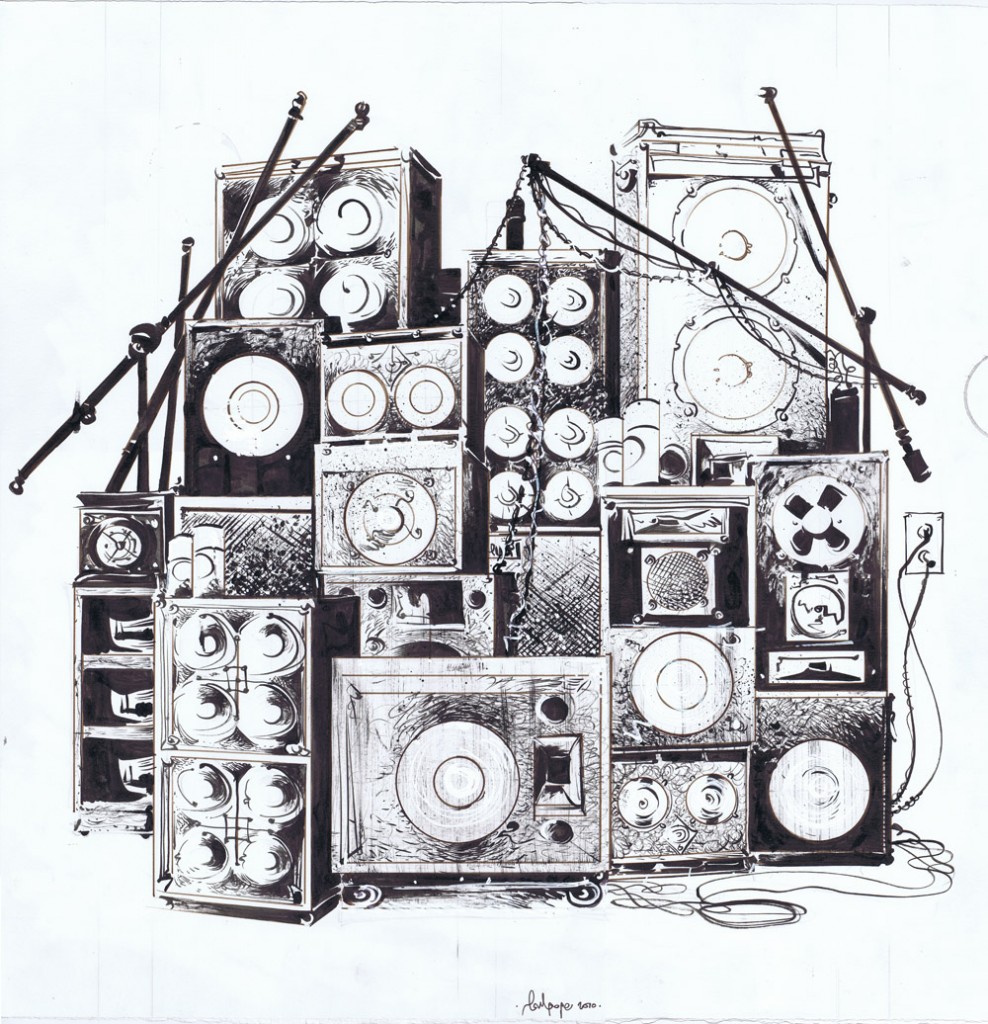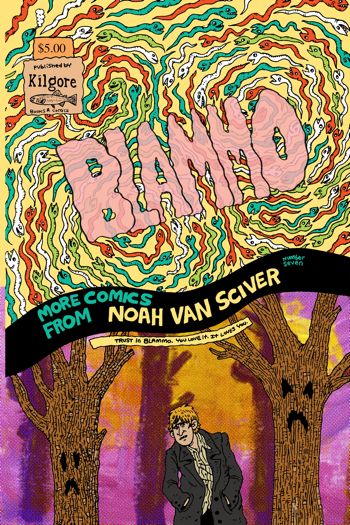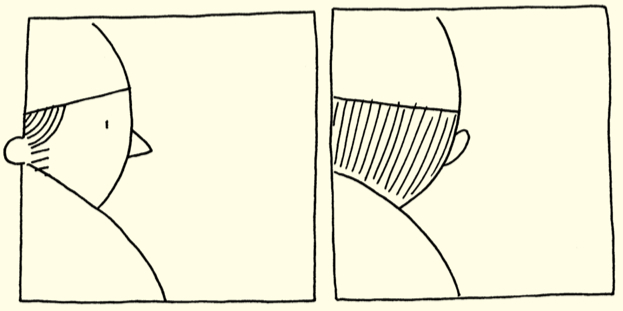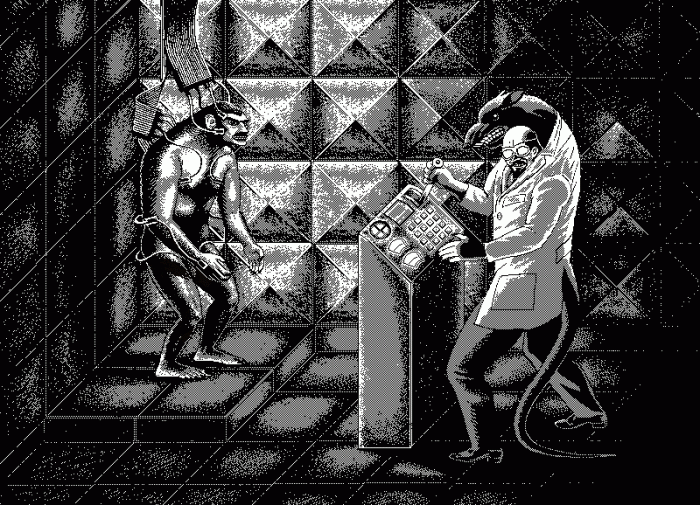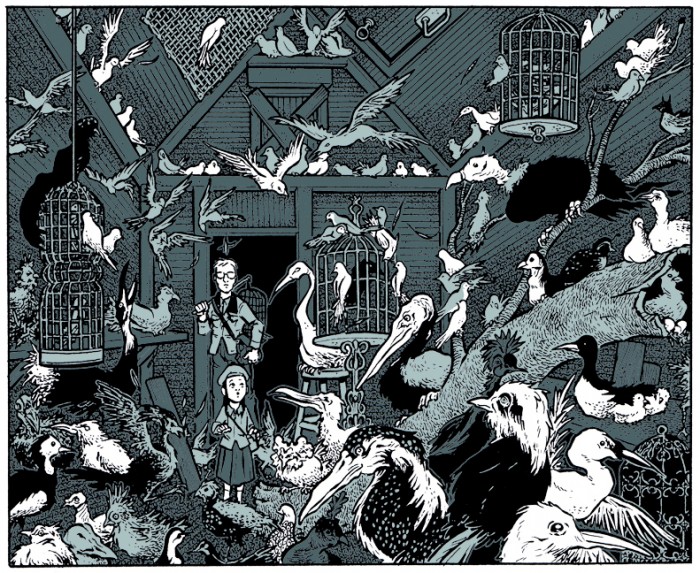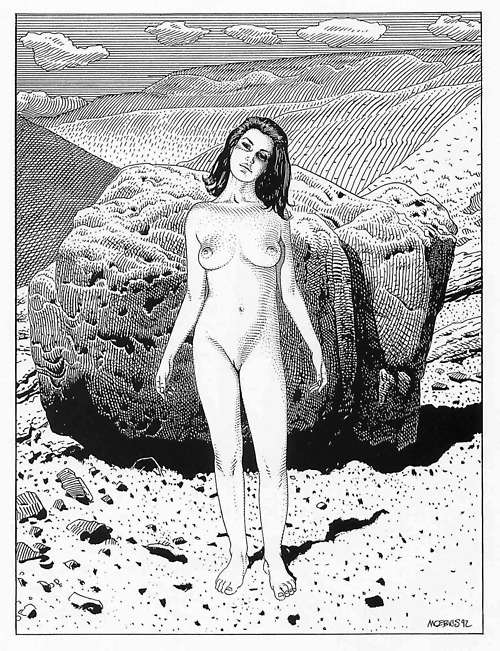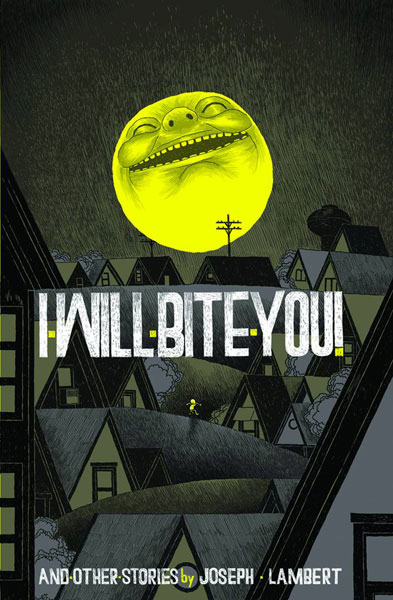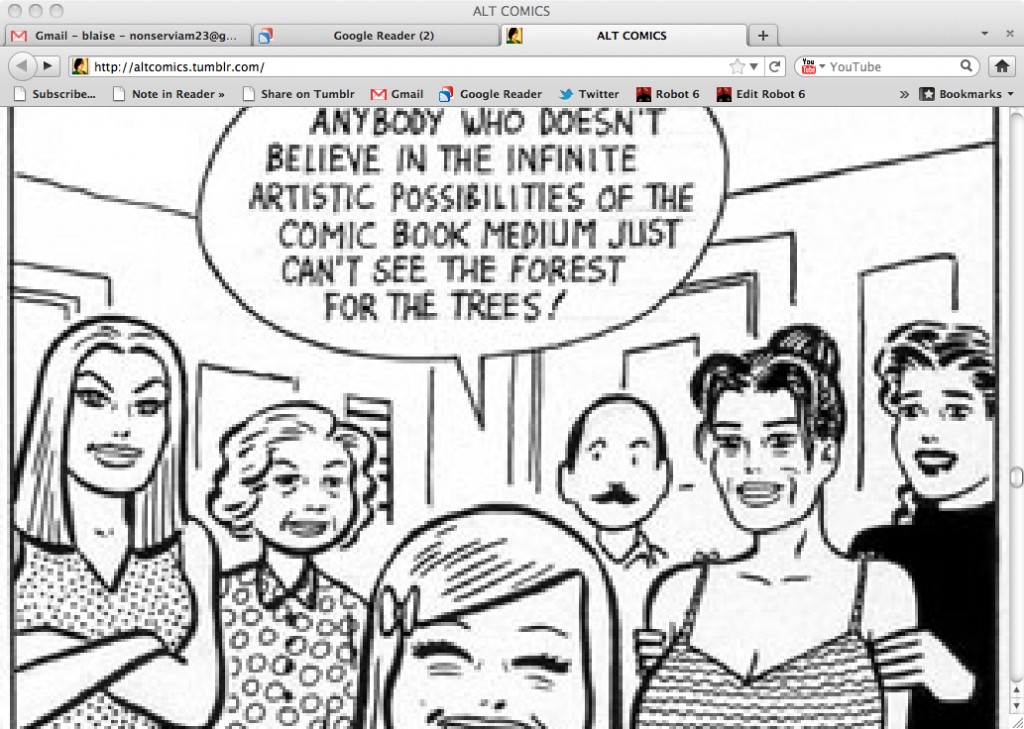Posts Tagged ‘comics’
Carnival of souls: Special “San Diego Comic-Con Day Zero” edition
July 21, 2011* The 2011 edition of San Diego’s Comic-Con International began last night with its traditional Wednesday Preview Night. Actually, it seemed to being on Monday, as publishers began rolling out their SDCC announcements early. Here are a few of the neater ones thus far.
* Bryan Lee O’Malley’s next project, Seconds, will be released by Villard in 2013. That’s all I got. That’s all anyone’s got about it, at the moment.
* After literally years of saying that publishing original graphic novels without serializing the content first doesn’t make financial sense for them, Marvel is doing exactly that with their new Season One line of standalone graphic novels retelling the origins of some of their major characters. I think there’s two interesting things to be said here. The first is that while Marvel’s no doubt going to get a lot of grief for “ripping off” DC’s similarly named Earth One line (or “line” — we’ve seen neither hide nor hair of Geoff Johns and Gary Frank’s Batman book since it was first announced), Earth One is actually more similar in terms of content to Marvel’s existing Ultimate line, in that it’s taking the characters and basic concepts and restarting them from scratch with all-new continuity. Season One, by contrast, is just an origin retelling of the sort Marvel’s done many times in floppy funnybook form. The second thing is that the talent involved isn’t superstars, but people who seem to me to be roughly on the level that the folks who launched the Ultimate line back in the day were at. That’s undoubtedly a cost-saving measure, but maybe, as with the Ultimate line, it’ll provide a chance to establish some new voices on a project tangential to the success of the mainstream Marvel Universe.
* In other news…
* Hooray, Tom Spurgeon is back at The Comics Reporter! Man, did I miss him. He starts things off with a bang, too: A lovely essay on Jaime Hernandez’s lovely “The Death of Speedy Ortiz.” I like his point about how young people can incorporate tragedy into their self-mythologies in a way that’s both helpful and deceitful; I certainly did.
* Spurge also offers a provocative essay arguing that yes indeed, it’s time for the Xeric Grants to go. I don’t think I agree with his analysis at all. I think breakout success in the webcomics field of the sort Tom says is now possible in a fashion akin to what the Xeric does for its winners is, for the most part, only possible within a relatively narrow range of artistic expression. (I also think Kickstarter success is only possible within a relatively narrow range of audience appeal, but Kickstarter’s not really something Tom’s talking about.). I think that if arthouse publishers like Koyama, PictureBox, Secret Acres, AdHouse, Pigeon Press et al were really sufficient to cover worthwhile young/new cartoonists, then someone ought to have told recent winners like Blaise Larmee, Lane Milburn, and Dave Kiersh (Dave Kiersh!), who all seem to me to be eminently publishable by such outfits but who turned to the Xeric anyway. And I don’t really see a problem with the Xeric moving away from its old-school conception of self-publishing as an end in itself; none of the aspects of the new-model Xeric — an honorific people take seriously in a world where Brad Meltzer’s Justice League wins Eisners, a chance for cartoonists to be handed some money and some printed comics, a foot in the door with small-press publishers — seem any less noble or delightful to me.
* By contrast, Geoff Grogan pens the most eloquent eulogy for the Xeric grant I’ve yet read, tackling not just the “what this person, place, or thing that doesn’t exist anymore meant to me” business that’s as far as most of us comics people ever go in these things, but arguing persuasively that the loss of the Xeric is the loss of an opportunity for cartoonists (or comics-makers, as Geoff might prefer) to experiment, in print. Both these elements are key. He also notes that the Xeric Foundation provided him with legal help when his excellent book Look Out!! Monsters ran into some trouble, which a ComicPress site and Kickstarter page are never going to provide anyone. Read it.
* Grant Morrison takes nerd culture to the woodshed. If you’ve ever wondered why a forward-thinking guy like Morrison has never managed to maintain a web presence, I think you now have your answer.
* Good riddance to the Ron Howard Dark Tower adaptation project, for now at least. Those books stink.
* The cartoonist Jason reviews John Carpenter’s The Thing. Ain’t the internet grand? My favorite thing about this is how he points out that as a Norwegian, he can understand every word the crazy Norwegian is shouting before the Americans kill him, making the whole movie that much more fatalistic.
* Curt Purcell didn’t care for Death Note overall, having realized that by the end he was reading more out of the residual goodwill engendered by the concept and the first few volumes than for interest in the increasingly byzantine doings of the killers, detectives, notebooks, and shinigami involved. That’s a fair read, although I recall enjoying myself right through the end.
* Matt Zoller Seitz and his ninth-grader daughter talk Harry Potter, the books and the movies, at length. I guess now’s the part where I say that the books convey the helplessness of children at the hands of adults really really well but are otherwise kind of a mess, the ending’s a convoluted punch-pulling trainwreck that gives way to a mawkishly sentimental and unimaginative epilogue, and I’ve had zero interest in seeing any of the movies since the first one. Every Potter needs a pooper!
* Man, Duel was a good movie. I probably haven’t seen it in a dozen years.
* Michael DeForge’s “College Girl by Night,” his contribution to the second volume of the alt-smut anthology Thickness, looks like potentially pretty hot stuff.
* Cool, creepy art from Jonny Negron.
Comics Time: Celluloid
July 20, 2011Celluloid
Dave McKean, writer/artist
Fantagraphics, June 2011
282 pages, hardcover
$35
Buy it from Fantagraphics
Buy it from Amazon.com
From a reviewer’s perspective, the nice thing about erotica is that, as with humor, there’s a clear threshold of physical response a work must cross to be judged successful. With humor comics, the key question (there are others, but this is the sina qua non) is “Did it make me laugh?” With erotic comics, it’s…well, let’s just say it ain’t laughter we’re after. And on that basic measurable (ahem) level, Celluloid comes up short (ahem ahem). McKean’s art is as otherworldly as ever, bathed in luminous gold, and until the final section it manages to avoid the “Hey, wanna watch some Sandman covers fuck?” photo gimmickry I was afraid of. But isn’t it kind of odd that of all the palettes McKean could choose to convey the film-projection-as-mystical-sexual-gateway metaphor that is at the heart of our nameless, speechless female protagonist’s “strange erotic journey” (to coin a phrase), he chose gold? Is that what you think of when you think of the shaft of light beaming from the projection booth to the screen, or the light the screen bathes you in in turn? Maybe if you’re Gordon Willis, but not if you’re me. The book is filled with weird little just-off details like that, from our young-ish heroine’s weirdly craggy body and her nose that seems to grow to Cyrano proportions at random depending on the angle McKean’s drawing her at, to the deeply unsexy choice to make our heroine’s foil in a lesbian sequence wear a garland of grapes that’s echoed by her (count ’em) fourteen breasts, leaving me to wonder if one of them was gonna get plucked off and eaten throughout their tryst. Working mostly with full splash pages and spreads, McKean is able to pull off striking isolated images here and there — off the top of my head I remember our heroine’s shocked face as she discovers a plaza full of copulating couples, a dramatic first kiss between our heroine and the grape goddess staged at a scale that makes it look like the sky is tenderly kissing the earth, and (one of the few actually hot moments in the book) her (non-sexual) removal of her top to take a bath right near the beginning of the book. But with the exception of the stunning black, white, and red sequence in which the protagonist sucks a demon’s totemic red dick until it ejaculates milky semen through the void like a spaceship floating by in 2001, isolated images are all they are. They get lost in a melange of homages to Picasso, Ernst, and “Soft Construction with Boiled Beans”-era Dalí, combined with McKean’s usual soft-focus multimedia wizardry and angular cartooning. What’s more, the whole affair has a didactic feel to it, as “let’s prove a point about the artistic legitimacy of erotica”-type comics often do. We’re clearly supposed to be proud of the protagonist’s journey of self-discovery, but all we have to go on to know such a journey is even required is a quick phone call at the beginning with her boyfriend — it’s an unhappy-seeming call, sure, but the impression it gives is that they’ve simply had a rough day at work, not that there’s some sexual void in their shared life that she’s filling in on her own, and certainly not to the point where the events of her magical journey into the sexy celluloid world make sense as a gauntlet to be thrown before the dude, as they are at the book’s end. That final sequence begins when the boyfriend returns home and turns on the mysterious projector that kicked off the woman’s journey. But by the time I closed the book, unfortunately, that projector was the only thing turned on. And that’s the heart, and other organs, of the matter, isn’t it?
Comics Time: The Wolf
July 19, 2011The Wolf
Tom Neely, writer/artist
I Will Destroy You, July 2011
228 pages
$25
Buy it from Tom Neely
See some preview pages and read my interview with Neely at Robot 6
One thing you’ll never get from online previews and PDFs of The Wolf, which were the only ways I’d experienced the book when I first read it and liked it enough to give it an effusive PR blurb, is its impact as a physical object. I’ve actually put off writing this review because I felt inadequate to the task of conveying what a smack in the face the thing feels like. It’s big and thick and square, with a wordless and cryptic cover that evokes albums of huge mystical mystery like In the Court of the Crimson King or Led Zeppelin IV. Inside, the one-per-page or per-spread images frequently go full-bleed, which isn’t the most uncommon thing in the comics world to be sure — but the square pages make it feel like you’re seeing a single panel blown up to brobdgnagian size. It’s a strange-making effect, taking the familiar “bigness” of a splash page or double-page spread, filtering it through a frame you’re not accustomed to, and making you feel the impact of size and scale like a new, fresh thing.
The images themselves are torn from an obviously deeply personal vocabulary of monsters, injecting the sexualized surrealism back into werewolves and zombies that have been stripped of their primal power by the conventions of genre. Spectacle, meanwhile, is here derived not just from violence or vistas but from sex: The battle between the title character and a multi-limbed red skeleton, a full moon that appears like a cigarette burn in a grey-blue night sky, and a series of abstract washes of hair-like blacks and fleshy pink-reds and seminal yellow-whites that appears in the middle of graphically depicted intercourse between the wolf and his pale, raven-haired bride all have equal knockout force behind them. You can tease an emotional narrative out of the proceedings easily enough — past callousness, cruelty, and self-destruction in the context of a relationship are overcome, atoned for, and healed through sexual connection, and a transcendent future is discovered, a natural world untouched by the taint of the bitter past. But it’s the way each individual stage of that journey is depicted with symbols, colors, and creatures that capture and embody it perfectly, their lush brushtrokes fraying and spattering and bleeding emotional intensity on every page, that gives the book its power. Every turn of the page is an encounter with raw feeling, made physical by cartooning. That’s great comics.
Carnival of souls: Special “Back from the Dance” edition
July 18, 2011* I read A Dance with Dragons. I liked it. If you’ve read it, come talk about it with me, artists Matt Wiegle and Sam Bosma, A Song of Ice and Fire superfans/megaexperts Elio & Linda, and other august personages.
* Last week I assembled a massive gallery of great Game of Thrones/A Song of Ice and Fire fanart from around the web for Robot 6. Do check it out; there’s something for everyone, or at least every ASoIaF fan. (This piece is by Rory Phillips.)
* Your top comics story: Peter Laird is discontinuing the Xeric Grants for self-published comics following one final round of grants in May 2012. This is terrible, terrible news. Laird says he’s doing that because digital publishing and digital fundraising have abrogated the need for the Xeric, but I think that’s a massive misreading of a) what kinds of comics are made feasible by webcomics; b) what kind of comics are capable of mounting successful Kickstarter campaigns without having first established a network of contacts in online comics fandom; c) the need North American comics have for one of the few awards that really is a mark of quality (for my money it’s the Xerics, the Ignatzes, and then perhaps the awards given by TCAF and Stumptown). This is going to make things a lot tougher on alternative comics creators — you need look no further than the list of past recipients to see how many noteworthy careers were made possible in part by the Xeric. That’s gone, now. It’s tough to object to Laird’s stated goal of transferring his Teenage Mutant Ninja Turtle millions from funnybooks to actual improving-people’s-lives charities, but I still think the Xerics will be sorely missed.
* Your other top comics story: Borders is dead.
* Your top nerd story: The Dwarves from The Hobbit look awesome. This is a fanmade photoshop of all the pictures released so far, and it fakes Thorin’s body based on the bust shot we’ve been given, but even so, my Hobbit enthusiasm has been officially awakened.
* Kiel Phegley talks to Grant Morrison about his new prose book about superheroes, Supergods. Superlawsuit watchers may want to note Morrison’s take on Siegel & Shuster.
* Marvel’s Tom Brevoort on what DC does and doesn’t do well: part one, part two. I doubt that many people reading this blog are Marvel or DC partisans, as is the case for the audience of those posts at Robot 6, so maybe you’ll be better capable of seeing just what a gift we readers of superhero comics have in a high-profile top-level editor who’s willing to say what he thinks about most anything, and can do so articulately and with ideas he’s actually thought through over the course of years in the industry, as opposed to regurgitating PR talking points. This is very, very, very rare.
* Speaking of Brevoort, he addresses a complaint I’ve had myself: Though all of his story has been told in Ed Brubaker’s Captain America series, Bucky’s death was relegated to Matt Fraction’s Fear Itself. Brevoort says Brubaker has written an epilogue one-shot that will address the death in the context of his excellent Cap run, which is good news.
* Flannery O’Connor: The Cartoons. ‘Nuff said!
* The hardcover for Jesse Moynihan’s Forming Vol. 1 looks terrific.
* Dan White has launched a new Cindy & Biscuit website at Mindless Ones. I like that comic quite a bit.
* Paul Karasik reviews Joyce Farmer’s Special Exits for The Comics Journal. You, whoever you are, ought to read that book.
* Jeffrey Brown of Clumsy and Incredible Change-Bots fame wrote the upcoming wedding comedy Save the Date starring Allison Brie and Lizzy Caplan. That is just wonderful.
* Whoa, NeilAlien resurfaced! It’s like I’ve died and gone to earlier in 2011.
* I’ll admit it, I love this kind of crazy collector’s project: DC is releasing a $150, 1,216-page DC Comics: The New 52 hardcover containing all 52 first issues from its September relaunch. Speaking of which: Ch-ch-ch-ch-changes! (Cf.) Elsewhere, Toronto’s The Beguiling comic shop is selling all 52 issues for a bundled price of $104; that strikes me as a great idea for retailers.
* Can you imagine getting a letter of praise from a master of your art like the letter Jim Woodring sent Hans Rickheit? Man oh man.
* Jonny Negron’s sexiest illustration, now in color!
* My collaborator Isaac Moylan sure can draw.
* I’m always up for a good look at James Cameron’s Aliens, a film that’s as good at what it does as any I can think of. This one comes courtesy of Edward Copeland.
* David Lynch made an animated video for Interpol’s very good song “Lights” called “I Touch a Red Button.” It’s like an exercise in how much creepy intensity he can wring out of four or five frames. He’s very good at making horrible faces, that’s for sure.
* Wow, watching this attempt to beat Super Mario Bros. with the lowest score possible without saving or cheating made for some pulse-pounding viewing. I was literally cringing and jumping in my seat. The Hammer Brothers sequence is like the 8-bit equivalent of the stairs of Khazad-Dûm.
Comics Time: Black Eye
July 13, 2011Black Eye #1
Wouter Vanhalemeesch, Al Columbia, Ian Huebert, Mark Newgarden, Onsmith, David Paleo, Roland Topor, Olivier Deprez, Olivier Schrauwen, Brecht Evens, Ivan Brunetti, Andy Gabrysiak, Michael Kupperman, Gnot Guedin, Tom Neely, Dav Guedin, Danny Hellman, Bob Levin, Brecht Vandenbroucke, Stephen Schudlich, Martin Rowson, Kaz, Max Clotfelter, Robert Goodin, Ryan Standfest, Jon Vermilyea, Mats!?, Nikki DeSautelle, Stéphane Blanquet, R. Sikoryak, Ludovic Debeurme, Emelie Östergren, Fanny Michaëlis, Lilli Carré, James Moore, Jeet Heer, Paul Nudd, Glenn Head, Paul Hornschemeier, Ken Parille, Paul Paetzel, writers/artists
Ryan Standfest, editor
Rotland Press + Comic Works, May 2011
112 pages
$14.95
Buy it from Ryan Standfest
For today’s Comics Time review, please visit The Comics Journal.
Comics Time: Our Love Is Real
July 8, 2011Our Love Is Real
Sam Humphries, writer
Steven Sanders, art
self-published, June 2011
24 pages
$3.99
Buy it at OurLoveIsRealComic.com
In the war to discomfit the reader, science fiction has an extra weapon in its arsenal: It can be set in a society whose underlying assumptions are disturbingly alien from our own. Depending on whether the differences happen to hit your buttons, this can be real put-the-book-down-and-squint-your-eyes-shut stuff in the right hands. The last thing I read to have that effect on me was “The People of Sand and Slag” by Paolo Baciagalupi in Wastelands, an anthology of post-apocalyptic short fiction. Baciagalupi created a world where genetically and biomechanically modified human beings presided over an empire of debris, feeling no pain, virtually indestructible, able to consume junk and rocks…and eminently unqualified to care the few vulnerable living creatures unfortunate enough to cross paths with them. It wasn’t a particularly gory or “disturbing” story, yet something about its protagonists, the fact that they were recognizably human yet utterly devoid of the qualities and vulnerabilities that we think of as characteristic of humanity, literally made me feel sick to my stomach. I still haven’t finished reading the anthology.
Our Love Is Real, it seems to me, is aiming to have the same effect. It’s set “five years after the AIDS vaccine,” in a world policed by hulking brutes in Iron Man/mecha exo-suits and characterized by sexual divisions not between genders or orientations, but between vegisexuals, mineralsexuals, and zoosexuals — people who have sex with custom-grown plants, the auras of crystals, and dogs respectively. But I think that previous sentence contains the problem with the project. The sex stuff that’s the story’s bread and butter is indeed rewardingly bizarre and blackly funny — I mean, look at that propaganda poster on the cover, it’s hilarious. But the world surrounding the sex is standard Dark Horse Legends sf-action material, instantly recognizable to anyone who’s read Hard Boiled or Martha Washington, or who’s seen the way Geof Darrow or Chris Burnham draw faces being smashed to flying splattering pieces. The character designs in particular are deeply indebted to Tony Moore, squarejawed men and snotnosed women who behave basically the way characters rooted in such designs can be expected to behave. When the genre visuals and action are that familiar, it’s tough to see how we get there from here with regards to the stuff that’s much further out. I mean, I get that the zoosexual cops hounding (no pun intended) the vegisexuals and mineralsexuals are analagous to heteronormativity and fag-bashing, but there’s not really an allowance made for the idea that people who have sex with dogs might build a sci-fi society that looks different from all the ones we’ve seen that were built in-story by plain-vanilla straight dudes. Starting with that lacuna, the book’s ideas never really congeal. It winds up feeling more like several neat ideas than one great one. I want it to go further.
But ultimately, the best compliment I could pay Our Love Is Real is that while its weakest points belong to other comics, its strongest points are all its own. The world depicted by Sanders and the characters that inhabit it may be overly familiar, but the climactic fight scene has real oomph and, weirdly, real grace. And while the characters’ behavior is traditional in a way that doesn’t mesh with the book’s bizarre animating ideas, those ideas are quite something, and are presented by Humphries in a way that’s straightforward but not smug self-congratulatory, the way knowingly out-there indie science-fiction comics by smart-and-they-know-it writers can be. Humphries’ is a new voice in a crowded field, saying truly strange and challenging things while speaking the language of mainstream action comics. With any luck that accent will thin, and future stories will have the fluency to forge a new dialect as singular as the ideas they’re designed to express.
Say Hello, Emily Carroll!
July 8, 2011Comics Time: SF Supplementary File #1
July 7, 2011SF Supplementary File #1
Ryan Cecil Smith, writer/artist
Closed Caption Comics, June 2011
12 pages
Read it for free at RyanCecilSmith.com
Buy it for $2 from Ryan Cecil Smith
What if ’80s SFF action-figure franchises really took on the central role in our collective mythmaking and storytelling that their hardcore devotees (myself included, let’s be honest) seem to think they deserve? The children’s books, fairy tales, and fables such a would would create for itself might look a lot like SF Supplementary File #1, a spinoff from Ryan Cecil Smith’s fine alt-genre actioner SF that provides the origin story for one of the Space Fleet Scientific Foundation Special Forces’ memorable members, Gorum. In his “once upon a time”-style story of hidden paradises and pillaged resources, mad royalty and noble scientists, slain parents and vowed vengeance, I hear echoes of everything from Superman and Batman to Eternia and Shangri-La to freaking Spaceballs, shot through with a childlike funneling of nuclear anxiety directly into terror over the potential loss of Mommy and Daddy. Smith’s art here is winningly crude, as befits drawings that can be captioned with sentences like “Gorum attacked every ship going IN or OUT of the Planet of Dunes with VOLCANO CANNONS” — yet it’s flexible, equally able to pull off sophisticated visual tricks like juxtaposing the explosions that destroy a world, the ship that escapes that destruction, and multiple representations of the teary eyes of that ship’s pilot as he views the horror like some kind of Futurist Axe Cop. It’s fun to see something so lightweight be so solid.
Carnival of souls: Dwarves on film, Our Love Is Real, San Diego Diary, more
July 7, 2011* My excitement about Peter Jackson’s The Hobbit (that is still a nice thing to be able to say, given what could have been) mounts with each new official photo the production releases. Dig Nori, Ori, and Dori, for example — that’s an unexpected and welcome direction for the Dwarves to go, visually. I wonder if each grouping of brothers in Thorin’s party will have their own sartorial style.
* Keep your eyes peeled for Sam Humphries and Steven Sanders’s strange sci-fi sex comic Our Love Is Real, now available digitally and otherwise. I’m still working out what the hell I think of it, which I suppose is mission-accomplished territory. Something about it reminds me of Paolo Baciagalupi’s supremely troubling SF short story “The People of Sand and Slag,” to give you some idea of where its head is at — not necessarily that it’s that effective, but that it’s proceeding from a similar place of positing an uncomfortably unfamiliar future humanity.
* This ought to be a popular item at your better comic conventions: Uncivilized Books is releasing a collection of Gabrielle Bell’s San Diego Diary strips, recounting her outsider’s experience at last year’s Comic-Con.
* An ultra-limited-edition full-color Yuichi Yokoyama book from PictureBox called Color Engineering? Sure, I’ll eat it.
* Michael DeForge’s Spider-Man nightmare “Peter’s Muscle” is now up for your reading pleasure at What Things Do. I liked this comic a lot.
* Over at Robot 6 I talked a bit more about Dave Kiersh’s Amazons and its depiction of fantasy femininity.
* Today’s Comics Grid must-read: Tony Venezia on Jaime Hernandez’s Ghost of Hoppers and the Freudian uncanny. Wow, the only way that sentence could be more up my alley is if David Bowie read it aloud.
* The great Josh Simmons has a schmancy new webstore.
* You know, normally, while I think Jonny Negron’s drawings of women are a blast, they don’t “do it” for me. But there are exceptions to every rule.
Carnival of souls: Tom Neely, Mat Brown, Dave Kiersh, Frank Miller, more
July 5, 2011* I’m very excited to direct you to my interview with Tom Neely about his new graphic novel The Wolf, which includes a selection of preview pages. The book is Tom’s best, and one of the best of the year.
* When was the last time you were truly amazed by an artist you’d just seen for the first time? For me it was my discovery via Monster Brains of Mat Brown. This stuff is incredible — like the Sistine Chapel painted by an Alien facehugger attached to Geof Darrow. Click through to see it at full size.
I mean, seriously.
* Whoa: Dave Kiersh has an entire blog dedicated to posting his early minicomics in their entirety. My favorites so far are 1998-99’s Quaaludes, 1999’s Young Adult, and 2003’s Amazons, none of which I’ve seen before despite being a fairly dedicated Dave K. fan. It’s amazing to think he hit his teenage-heartbreak sweet spot when he pretty much was a teenager.
* Mmmm, hot licks from Holy Terror by Frank Miller.
* George R.R. Martin’s A Song of Ice and Fire occupies four of the top ten New York Times paperback best sellers right now, including #1. Don’t click the list unless you want the shit spoiled out of books three and four, though.
* Is it just me, or are the Harvey Award nominees better than the Eisner Award nominees this year? Like, insofar as they actually nominated Acme Novelty Library #20 and Love & Rockets: New Stories #3?
* Gabrielle Bell will be posting a diary comic every day for the month of July. Good news for people who like to see new Bell.
* The Comics Grid’s Kathleen Dunley takes a close look at the overabundance of information in the truly horrifying torture sequence from Brian Chippendale’s Ninja. I’d forgotten how difficult that page was to take.
* I’m actually not nuts about the posts in practice — they feel a bit underbaked, a bit too dependent on the reader sharing certain assumptions about and impressions of any given song — but in theory, the music blog One Week One Band spending seven days talking about David Bowie’s 1990s work (with writer Ian McDuffie) is an exciting prospect to me, since that’s the first David Bowie I knew. Like Tori Amos, Aphex Twin, Pantera, Pink Floyd, Marilyn Manson, Gary Numan, and Joy Division, I got into David Bowie because Trent Reznor was into David Bowie. Earthling was my first Bowie record, and it’s still one of my favorites. It’s so loud!
* Better in practice is Matt Zoller Seitz’s list of The 10 Loudest Movies Ever!! It’s basically seven films that are varying degrees of wonderful and then three piles of shit.
* Uno Moralez’s random
image/gif gallery posts are really the best bang for your internet buck. Please click the link — if you haven’t seen one of these things, you can’t understand.
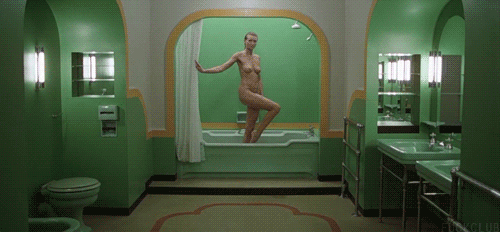
* This is almost anticlimactic after the earlier Mat Brown link, but Monster Brains’ Charles James Folkard gallery is lovely as well. Aeron Alfrey’s really been on a hot streak at that site lately.
* Tom Brevoort gives good interview.
Nostalgia is powerful and potent, and it’s one of the things, particularly for the longtime audience, that makes things go. If you can drop in a reference or do a twist or bounce some story point off a comic we fondly remember, we as an audience like it. It works for us. It rewards the investment in the material and the time spent, and it creates a larger sense of involvement than is typically possible in a single TV show or a movie or a novel. It’s one of the things that comics can do with their serial storytelling style that many other forms of entertainment can’t. The danger there is that if you rely on it too much, you’re telling stories only for people who have been reading for 30 years or who are willing to put in the hard work to understand whatever it is you’re talking about – the particular language you’re speaking. That’s the balancing act.
* It’s hard out here for a cartoonist: Theo Ellsworth edition.
* Best of luck to my old Wizard coworker Rick Marshall as he departs MTV’s Splash Page blog.
* Film and culture historian Robert Sklar has died, rather tragically. A part of me will always be a Film Studies student, and that part is very saddened by this.
Carnival of souls: Grant Morrison’s Watchmen sequel, Dave Kiersh, more Jim Woodring, more
June 30, 2011* DC pitched Grant Morrison on writing a Watchmen sequel; he declined. That tidbit comes from the Mindless Ones’ very fun interview with Morrison.
* Rob Clough examines the oeuvre of Dave Kiersh, perhaps the most underappreciated cartoonist of the last decade-plus given how present his nostalgia-tinged tone poems about the teenage wasteland are in the zeitgeist. And what a dreamy picture of him, too!
* People are organizing protests of the DC relaunch at the San Diego Comic-Con and of Odd Future at the Pitchfork Festival. Why not, says I. As silly as that pairing makes it all seem, the comment thread at the link is a surprisingly thoughtful conversation about the uses and limits of protest.
* Matt Zoller Seitz has launched a new group blog called PressPlay, dedicated primarily to video essays. That’s something to get excited about.
* 300: Battle of Artemisia — wow, that really rolls off the tongue.
* J. Caleb Mozzocco joins Robot 6 with a post on Ralph Cosentino’s Wonder Woman children’s book. Cosentino has done similar books on Superman, which I haven’t seen, and Batman, which is one of the best Batman anythings I’ve ever read. If he can distill WW’s milieu and appeal as beautifully as he did Batman’s, his book should be issued to DC executives.
* Thrilled to see What Things Do posting more Abner Dean.
* Finally, a couple of quotes that have been resonating with me since I read them.
Clarence’s ability to enjoy Clarence was incredible.
–from Bruce Springsteen’s eulogy for Clarence Clemons (via Pitchfork)
RUDICK: Did the Surrealism exhibition that you saw in 1968 have a similar effect on you?
WOODRING: That hit me harder and lasted longer than anything else I’ve ever seen.
RUDICK: What was it about that body of work that had such an impact on you?
WOODRING: I was still in high school. I didn’t know Surrealism existed. I just went with some people I knew down to the L.A. County Museum of Art to see this huge Surrealism and dada retrospective. I had no expectations. The first thing that I saw when I walked in the door was The Song of Love by Giorgio de Chirico, with the plaster cast and the red rubber glove. I saw that and my mind just started racing, trying to understand it because it had such a mood of such intensity, and I was thinking, A red rubber glove? Why is that affecting me like this? What is going on here? It’s like magic.
It was really an all-star show, and they had the crème de la crème: Dalí’s best paintings, Max Ernst’s best paintings, Victor Brauner, Magritte, Hans Bellmer. I didn’t really understand it at the time, but I went back to see it a second time and realized, God, this stuff is just bristling with sex energy. These guys must’ve thought about sex all the time. Dalí’s Great Masturbator was there, and various libidinous Magrittes, Max Ernsts, and especially the Hans Bellmer stuff. It was just so heavily erotic that I, virgin that I was, thought, Sex is magic. It’s where all this hallucinatory power comes from.
My parents were very conservative, and all their friends were conservative—it was a very unresponsive, unnurturing environment for me. I learned from that show for the first time that there were adults who worked hard at unraveling those mysteries and capturing and putting them down. I had no idea. I just thought that I was stuck off in a corner of the universe by myself, and I’d never find a tribe of people to relate to or people to confirm what I was believing. It was like being reborn, seeing that this world of possibilities existed, to say nothing of the work itself, which was so heavy and intense and enjoyable. The pleasure I felt from seeing that stuff lasted for weeks afterward—years, really. I still get a frisson thinking about it.
–from Nicole Rudick’s interview with Jim Woodring in The Comics Journal
Comics Time: L.A. Diary
June 29, 2011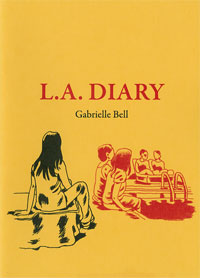 L.A. Diary
L.A. Diary
Gabrielle Bell, writer/artist
Uncivilized Books, October 2009
20 pages
$4
Buy it from Uncivilized Books
He doesn’t go quite this far himself, but it’s easy to interpret cartoonist and Uncivilized Books publisher Tom Kaczynski’s introduction to this minicomic collection of diary strips and sketchbook pages from Gabrielle Bell as a claim that her lack of transgression is itself transgressive. “Bell is not possessed by demons,” he writes by way of comparing Bell’s work to the autobiographical comics tradition established by Justin Green and Robert Crumb, going on to compare her work to the very root of the diaristic impulse in Western culture: maintaining a daily account of the world to better understand one’s place in it. And indeed, Bell’s understanding of her place in the world, as expressed through these comics, leaves little room for iconoclasm and taboo violation: The climactic strip in the collection focuses on her inability to hug people without dissociating. But Bell never translates her discomforts into reverse-exhibitionistic cris de coeur of loneliness, either — from the cover of the comic on down, she may be quietly separating herself from the friends with which she is constantly surrounded, but, well, she’s constantly surrounded by friends. Like the yoga poses she holds in a class designed to cultivate inner peace but which in Bell’s case simply give her one more opportunity for her mind to recursively burrow inside itself, her self-presentation in these comics is a painstakingly struck balance, neither woe-is-me nor look-at-me.
So no, we will never see a “Minnie’s 3rd Love” or “My Sex History” from Gabrielle Bell. But in this light, the smudgy swatches of black that dot her square panels seemingly at random and had me baffled for years could perhaps be seen as a deliberate act of obscurantism, breaking the plane of the art as if to interrupt our ability to take it in vérité-style, a way to say “No, this isn’t real, this is just a drawing.” Kaczynski suggests that that act of drawing is a “declaration of fidelity to the Great Work”; the diary form it takes, then, is simply a way for Bell to lash herself to the yoke of making art on a consistent basis. If he’s right, then Bell’s program has served her well, enabling her to produce a substantial body of work with nary a demon to drive her. Thus if there is a shocking revelation to be found in L.A. Diary, it’s the book’s final third, which reproduces the pages in her spiral-bound notebook where the preceding strips first took shape. Replete with spelling errors, cruder and at times almost childlike linework, broader and blunter story beats, and more direct navel-gazing (an abandoned storyline about starting a blog, a self-portrait in the locker-room shower that gets a bit toned-down and covered-up in the final version), it feels almost breathlessly unrefined compared to the finished product. It’s not Binky Brown Meets the Holy Virgin Mary, but in context, the exhibitionism is just as raw.
Comics Time: WunderKammer No. 1
June 27, 2011WunderKammer No. 1
Nicholas Di Genova, writer/artist
Koyama Press, 2009
24 pages
$8
Read about it at Koyama
Theoretically you can buy it at Nicholas Di Genova’s website but I can’t get it to load
Buy it from Atomic Books
Visit Nicholas Di Genova’s blog
In googling for images and purchase links for this compendium of animal drawings by Nicholas Di Genova (of whom I was previously aware as a fellow resident of Partyka‘s periphery), I came across a post on a New York City art blog that took a faint-praise approach to Di Genova’s art but was really impressed by this so-crazy-it-just-might-work innovation he’d had of printing his pieces in a cheap, floppy book. Imagine that! So god knows what the fine art world (I feel like that should be in scare caps — The Fine Art World) makes of this stuff, and this way of presenting it. To me it’s a comic book, and a stunner. Di Genova specializes in drawing braying, barking, growling, blank-pupiled animals of all shapes and sizes and species, including many that don’t actually exist, in a riot of accrued maximalist detail. Each of his dogs, bears, rams, wolves with ram horns, bears with bird heads, two-headed turtles, tyrannosaurus rexes with zebra coloration and manes, three-eyed gorilla/bat hybrids and so on appear to have been constructed by carefully gluing little rectangles and circles and lines together, the way chainmail is constructed one link at a time. Only here the construction doesn’t necessarily seem chained together, so you’re left half tempted to shake the book like a snowglobe to see if the constituent parts resettle in new shapes to create a new bestiary. Di Genova repeats this dizzying effect in macro via pages that consist of massive grids of animal heads, one breed/species after another, one head per borderless panel — dogs, birds, and frogs each get their own page here, but there are plenty of smaller grids featuring turtles, bears, bats, rodents, and god knows what else. I found my eye zipping back and forth from line to line in an S-shape a la Brian Chippendale, the better to take each incredibly detailed head in without missing a beat. The pages featuring the smaller grids often come across like some sort of alternate-universe Chris Ware suffering from Audubon-inspired monomania: A large portrait of an animal will be connected to a grid of tiny ones with a diagrammatic line, or encircled and radiating off smaller drawings like the spokes of a wheel. A relationship, even a narrative, is implied through these devices; the fun is figuring out what the hell they could be. And while we’re on the subject of the visual language of comics, Di Genova comes up with the best technique for depicting the non-verbal vocalizations of animals I’ve seen maybe ever: tiny word balloons completely colored black. Whether it’s a bark, a tweet, a ribbit, or…whatever sound turtles make, it works.
The book’s centerpiece, literally and metaphorically, is the spread where Di Genova’s project is at its most basic and blunt: 702 butterflies, each as unique as a snowflake, in a 27 x 26 butterfly grid bleeding right off the top and bottom of the centerfold spread. The effect is at once overwhelming and inviting: I was dazzled by the variety present in nature and intimidated, almost horrified, by the artificial reproduction of that natural variety. At the same time, I simultaneously resigned myself to never really being able to take in the whole of the image and diving right into the spread to soak up as much as I could…and I distrust pat “as above, so below” interpretations, but what the hey: There you have it.
Carnival of souls: Jim Woodring interviews, various creepy and lovely images, more
June 27, 2011* Nicole Rudick interviews Jim Woodring at glorious length for The Comics Journal:
RUDICK: Are [the apparitions you’ve seen] usually the same thing or similar things?
WOODRING: No, they’re always different. The last thing I saw was a guy standing upstairs in my hallway, standing bolt upright, with a leather harness on his face.
RUDICK: Does it frighten you to see those things?
WOODRING: That one was extremely frightening. At first, I thought it was my reflection in the mirror. Then I thought, There’s no mirror there. I saw this guy, just standing, wearing black pants and a white shirt, with his face in a leather harness with the number nine on leather tabs at every junction of the straps, and his mouth was open in a rictus. I could see his teeth, and his eyes were staring at me in this beseeching way. He left after a couple of seconds, but it was very vivid while it occurred.
Then a couple of years before that, I saw the Thompson Twins, Thomson and Thompson from Tintin. They were in black and white and were walking down the street with a full-color nine-foot streetwalker in fuchsia hot pants. That resolved into a woman and her two small children. Then the time before that, I was at the mall and my neighbor lady saw me and came up behind me and spoke my name, and when I turned around and looked at her, where her head should have been there was this eggshell of lint, which had the front pushed in, and there was a big gob of chewing gum or something sitting at the base of it. That was a frightening experience. I screamed when I saw that. That just scared the shit out of me.
The thing these all have in common is that they’re not at all vague, they’re very crisp, and I retain memories of them with extraordinary vividness. I’ve drawn all these things out. They’re very sharp, almost more sharp than real life, in the same way that when people meditate and they see the white light—it’s obviously not light, it’s not photons, it’s something else, more vivid than light. Because you’re not seeing with your eyes, you’re seeing with your mind when these things happen, they have sharpness and an intensity that regular visual things don’t.
That’s the juiciest part, but there’s stuff in there about the Surrealists, and horror as the sacred, and symmetry, and struggling with the presence of evil in a world that also contains wonderful things, and all manner of other stuff that hit me right in the gut. You must read this.
* Hey, it’s a new Emily Carroll comic! This contains one of her creepiest images yet.
* Fight Club screenwriter Jim Uhls will be adapting the Nine Inch Nails dystopian-future concept album Year Zero for Trent Reznor’s long-gestating HBO/BBC miniseries. That sounds fine.
* Too Much Coffee Man‘s Shannon Wheeler, of all people, nails the problem with Chester Brown’s Paying For It, as succinctly as anyone I’ve seen make the attempt. I think calling for a heavier editorial hand is a nonstarter, though, and for good reason. A heavier editorial hand would likely have preempted Chester Brown’s entire career.
* Curt Purcell salutes the proud wearer of Comics’ Greatest Jacket, Death Note‘s Naomi Misora.
* Paging Frank Santoro: Marcos Martin is really approaching page layout differently than anyone else in superhero comics, if this preview page from his and Mark Waid’s Daredevil #1 is any indication.
* I’m really not sure what Darryl Ayo’s comics call to arms is about — the problems, and the people, he’s addressing are described in terms too general to be useful. Mostly I find my enjoyment of comics increasing the less I worry about the state of comics, or more specifically the less I expose myself to the daily scrum of jawjaw about same. That said, he put together a gallery of lovely images to support the post, including these pieces by Al Columbia and Frank Quitely that I’d never seen before.
* Aeron Alfrey of Monster Brains has posted a couple of killer galleries lately. First up is the cosmic horror of Anatoly Fomenko, with its wondrous and oppressive sense of scale:
* And next is the scabrous, texture-heavy creature portraiture of Hasama (warning: the image below is fine, but the rest are not for anyone who’s squeamish about facial disfiguration):
* Aled Lewis’s “Video Games vs. Real Life” is similar to a Star Wars-based photography project that made the rounds a while back, but even though I was familiar with the basic idea at play, I still found this Donkey Kong image kind of unnerving. Looking through the foliage and seeing something looking back at you is the great cryptozoological dream/nightmare image.
* If you can’t trust them to straighten their belts, how can you trust them to save us all from Despero???
* I’m pretty excited to discover a Broadway revival of Godspell is in the works for this October. Stephen Schwartz, the show’s creator, is involved, so that leaves me optimistic that they won’t just slap a coat of Rent paint on the thing. It’s my favorite show.
Comics Time: Night Animals
June 24, 2011Night Animals
Brecht Evens, writer/artist
Top Shelf, January 2011
48 pages
$7.95
Read a preview and buy it from Top Shelf
Dare I say that this is even better than The Wrong Place? I think I dare! Created before that book but published in English after it, Night Animals is a more traditionally drawn affair from author Brecht Evens in that it is, in fact, drawn. The Wrong Place‘s paint-only art was its distinctive selling point and, via clever coloring, its primary storytelling mechanism, but as it turns out this innovation meant Evens abandoned a really lovely line — thick, ropy, tactile, full of motion, fun. It gives the art more immediate pop, and gives Evens’s really vibrant colors (look at that cover; now imagine a whole book like that) the day off, as it were, freeing them from the burden of telling the story themselves and allowing them to comment on and enhance the action, and of course simply delight the eye.
Said action consists of two separate stories in which the protagonists’ sexuality is passed through a gauntlet of children’s-story-style creatures of the wild. The first, in which a balding businessman and apparent tyro furry goes down a literal rabbit hole and braves an increasingly terrifying series of beasts on his way to the “Blind Date” that gives the story its title, has a happy ending: A grinning, recumbent woman in rabbit ears, probably a little plain under normal circumstances with her hornrimmed glasses and mole and pointy schnoz but bomb-ass hot as she’s presented at the end of this journey, with a promising white arrow directing her bunny-suited suitor straight to her crotch. After the painstakingly delineated labyrinth we’ve followed to get here, including a pair of stunning spreads filled with seemingly every sea monster and forest creature Evens could think of, this punchline image elicited a good-natured “haw!” from me; if I’d been there, I’d have high-fived both the guy and the girl before leaving them to get it on. Indeed, the very last image, a Wrong Place-style painted silhouette of the two characters in floppy-eared flagrante delicto, gives the impression of the artist quietly backing away and closing the door behind himself, letting our hero and heroine do their stuff in peace. Evens really nails the simple satisfaction sex sometimes provides — life can be filled with storm and stress, but every now and then it’s nothing that a special someone’s smile and genitals can’t fix.
The scarred side of the Night Animals coin is the second and concluding story, “Bad Friends.” (“So it’s not just a clever name.”—Wayne’s World) It starts, and indeed continues, innocuously enough, as a sort of distaff Where the Wild Things Are/Aesopian cover version of Stephen King’s Carrie, in which puberty rather than petulance is what enables our young protagonist to heed the call of the wild, and in which the rapid locker-room onset of menstruation leads not to a telekinetic killing spree but a visit from the Great God Pan, a trip on the back of a giant bird, and a rockin’ party with various critters in the woods. Our heroine whoops it up, enjoying the nakedness her newfound friends have reduced her to — complete with body-paint heart drawn around her pudenda — so much so that she doesn’t notice the darkness in their eyes as they close in to devour her. This story ends not with a clinch, but an empty bloodstained bed, worried parents, an ineffectual search of the now-empty forest, a single flower wilting on the ground. Evens’s trademark red goes from a spot-color stain on the girl’s underwear, to the alluring light of an illicit night out, to a symbol of sexual abandon, to the color of violence and death. It’s quite a performance, sexy and creepy at precisely the moments Evens wishes it to be one or the other, and a direct contrast with the earthy lightheartedness of the opening story. It’s awfully easy for sex comics to get didactic in their rah-rah positivity; Evens gives us the flipside, counting on us to be grown up enough to weigh the pros and cons ourselves. Good for him and good for this comic. It’s a blast.
Carnival of souls: Hobbit news, Dave Sim, Daniel Clowes, two remarkable short animated films, more
June 24, 2011* Maybe my deep and abiding satisfaction with The Lord of the Rings has given this subsequent project an air of anticlimax. Maybe the lingering stink of Guillermo Del Toro, genre filmmaking’s most overrated non-Christopher Nolan exemplar, has dampened my enthusiasm. Maybe the advent of everything from Lost to Battlestar Galactica to A Song of Ice and Fire has diffused my ability to obsessively interest myself in another serialized work of fantastic fiction. Maybe the constant budget and legal and personnel problems and the resulting stops and starts in production have afforded me a little too much of a confidence-sapping glimpse into how the sausage gets made. Regardless, I’ve found myself bizarrely (for me, a man who has the White Tree of Gondor tattooed on his person) indifferent to Peter Jackson’s Hobbit movies. But if you were Peter Jackson and you wanted to rectify that state of affairs, you could do much, much worse than releasing a production still as note-perfect as the one below and casting Evangeline Lilly as a Wood Elf, I’ll tell you that goddamn much.
* Jeet Heer scans the length and breadth of Daniel Clowes’s recent works — lots to chew on in the books, lots to chew on in the piece, though Jeet fails to tackle the critical question of whether he can identify with Wilson or not.
* Also at the Journal: Tim Kreider’s piece on Cerebus explains both why you’d want to read Dave Sim’s landmark comic and why you wouldn’t better than any I’ve read. I commented on the piece at Robot 6.
* Gary Groth on the state of the comics industry. Be sure to check the comment thread to discover that the publisher of Love and Rockets, Eightball, Peanuts, and The Acme Novelty Library has failed to live up to superhero fans’ exacting standards.
* Hans Rickheit has launched his Cochlea & Eustachia feature as a webcomic. That’s a great strip every time it appears.
* Curt Purcell on the fashion of Death Note. I’ll tell you what — I don’t remember the name of that ill-fated FBI agent from the second volume, but I sure remember her jacket.
* Sheeeeesh, this picture of a speaker stack by Paul Pope.
* I need to write this down someplace before I forget: that supercut video of the 100 Greatest Movie Threats should have included the bit from The Three Amigos where Steve Martin tells El Guapo “Let her go or I’ll fill your guts so full of lead you’ll be using your dick for a pencil” and the part from Invasion U.S.A. where Chuck Norris tells a guy “I’ll hit you with so many rights you’re gonna beg for a left.”
* The 2D material in this half-hour animated Italian-language adaptation of H.P. Lovecraft’s “At the Mountains of Madness” is crude, yes. But the computer-rendered sequence in which the plane flies through the mountains and into the dead city beyond, starting around the 11:50 mark? Absolutely astonishing. The sense of scale is horrific, and the lighting…man, if a live-action horror film were lit this way today, we’d be celebrating in the streets. I had no idea gray could glow. (Via Bryan Alexander.)
* And from the makers of my beloved ELA, PepperMelon, comes a new short film called fIRST — four minutes of dayglo sci-fi splendor and emotional oomph.
“fIRST” – a short story by PepperMelon from PepperMelon on Vimeo.
Comics Time: Blammo #7
June 22, 2011Blammo #7
Noah Van Sciver, writer/artist
Kilgore Books & Comics, February 2011
40 pages
$5
Buy it from Kilgore
The multiple times Noah Van Sciver uses fake ads and author’s notes to remind us of this notwithstanding, Blammo‘s throwback status as a ’90s-style solo-anthology floppy-format black-and-white “alternative comic book that is introspective and drawn by a hopelessly poor twentysomething with seasonal affective disorder” is one of the least interesting things about Blammo #7. It doesn’t hold a candle to the way he draws the darkness of a Halloween night spent trick-or-treating with a sky full of simple horizontal lines in “Because I Have To,” or to his po-faced, actually rather creepy retellings of a couple of Scary Stories to Tell in the Dark-style serial-killer urban legends in “Don’t Turn On the Light” and “This Is the Last One I’m Sending You Today.” It’s not as noteworthy as the way he tends to cheat his characters toward the viewer, the better to emphasize the big ears and big noses and worried brows and frowning mouths of his characters’ faces, or the way the whole of those faces is constructed so solidly that they remind me of a handwritten cursive letter more than a face. It doesn’t account for his slice-of-life fiction’s endearingly loose and rambling narratives — the way “Who Are You, Jesus?” piles up ironies in such a way as to emphasize its main character’s simultaneous shittiness and sympathetic nature with each turn, or the way the “Foreword/Because I Have To/Afterword” suite tells the story of a guy’s emotionally fraught Halloween evening in three sections wherein each thing that happens to him is weirdly disconnected from the others in precisely the way life tends to work. It doesn’t cover the way his broad funny-animal Chick tract parody complements his totally straightforward account of Joseph Smith and the origin of the Mormon faith, the way a biting fuck-you and a lingering respect tend to mingle in the lapsed. No, the mere fact that this is a defiantly anachronistic and un-hip alternative comic book doesn’t speak to the most important thing about it: It’s a very good one.
Carnival of souls: Brian Chippendale on Marvel, Kim Thompson on Tardi/Manchette, the Big Man, more
June 20, 2011* My final Game of Thrones chat with Megan Morse is now up at The Cool Kids Table. I’d say this one’s most interesting for our talk of different approaches to season finales, and what was expected here versus what was delivered.
* Brian Chippendale is back writing about Marvel comics! Nobody does it better. He’s absolutely right that Uncanny X-Force is a really good book, by the way. Also, Brian Chippendale is on Twitter.
* Kim Thompson interviews himself about the new Jacques Tardi/Jean-Patrick Manchette book Like a Sniper Lining Up His Shot. I really don’t like the sound of what he says about cat lovers beware.
* Over at Topless Robot, my pal Rob Bricken has some fun at Green Lantern‘s expense. As he and I have both said before, you can put up with almost any number of plot holes of whatever width provided the stuff those holes were poked in was worthwhile to begin with.
* John Porcellino’s King-Cat #69 is now up on What Things Do. I liked that issue.
* New Ben Katchor is always a delight.
* Uno Moralez is great update: Uno Moralez is great.
* I haven’t been following Hans Rickheit’s Ectopiary; this page tells me I ought to get on that toot sweet.
* And how about that Moebius?
* Finally, I will miss Clarence Clemons, who helped make this.
Comics Time: I Will Bite You! and Other Stories
June 20, 2011I Will Bite You! and Other Stories
Joseph Lambert, writer/artist
Secret Acres, April 2011
128 pages
$14
Buy it from Secret Acres
Buy it from Amazon.com
You want to see artists riding their personal visual vocabulary past the realm of utility and into Idiosyncracy Land. From Kirby crackle and Ditko hands to Jim Woodring’s fungoids and Al Columbia’s erasures, signature tropes are frequently a sign that something not so much practical as alchemical is going on in that artist’s brain when he puts lines on paper. Judging from this splash-making debut book from Joseph Lambert, a collection of work previously published in various anthologies and minicomics, Lambert has several such obsessions: Big grinning suns with devious intentions, fumingly angry and violent little children, and using the perspectivally flattening effect of two-dimensional line art to make people and things interact in unexpected ways — characters grabbing their word balloons to use as weapons, people in the foreground jumping onto objects that in “reality” are miles away or literally in outer space. The problem is that none of these visual tricks say much of anything to me. Watching an angry little kid leap into the air and assault the onlooking sun makes for a clever visual, but not a particularly communicative one. Children’s stories have used this kind of device to convey the naivete of their protagonists, and the matter-of-fact wonders of the world when seen through a child’s eyes; mythology uses it to bring a huge and frightening world down to our level, to grant us a degree of control. For Lambert, I think there’s an exploration of rage and frustration under here someplace, but it’s diluted from overuse. If that many characters are angry enough to threaten the sun, then how angry are any of them, really? It’s as though Lambert held his thumb out and blotted out the sun and thought “Wouldn’t it be neat to draw something that did that literally?” And yes, it’s neat, but after a while it’s not much more than that. Too many of the visuals presented here — word-balloon weapons, dancin’ on the ceiling perspective shifts, characters swallowing other characters whole and unharmed — have that feeling. “Why not?” is a terrific question for an artist to ask himself; “why?” is sometimes a better one.
Comics Time: ALT COMICS
June 17, 2011ALT COMICS
Editor unknown, to me at least, but it sure seems like a Comets Comets production
May 2010-present
Read it at altcomics.tumblr.com
“Comics is any art you can read.”—Sean T. Collins
Seen through an RSS reader, the Tumblr dashboard, or the crisply laid out collection of thumbnails that is its Tumblr archive, ALT COMICS is like any other image-based tumblelog. Viewed at its own address? It’s a black hole. Hold down the spacebar and you’ll rapidly scroll through literally thousands of images, frequently but by no means entirely of the “alt comics” persuasion, with the many many images that aren’t sort of averaging out in that direction. But they’re not meant to be sampled as eye candy, or as proof of the blogger’s excellent taste. Each one is blown up to the same massive screen-spanning size regardless of its original size, scale, or resolution. The result digitally distorts many of the images, makes most of them far too big to take in all at once, and erases any of the tumblr artifacts — permalinks, note counts, tags, sources — that tell you where one post ends and the other begins. The result? Pure images, pure juxtaposition, stripped of almost any context other than what’s immediately visible on the screen at the moment, and the cumulative effect of the accumulation of those moments. Taking that endless scroll to the blog’s all but unreachable bottom is a journey into the sheer pleasure of seeing lines on paper (or “paper”), seeing words mixed up with art, seeing styles collide and fracture and explode and detourne and corrode. It also invites you to deduce a method to the madness. Are the giant photos of James Kochalka, Jeffrey Brown, Matt Madden & Jessica Abel, and the Harkham/Crane/Ryan/Hernandez/Regé/Santoro L.A. comics crew intended as the equivalent of Johnny Rotten’s “I HATE PINK FLOYD” shirt? Which does the author of the blog like more: Jonny Negron or Goodnight Moon, Chris Ware or some poorly photoshopped internet-age visual noise, Scott Pilgrim or Harold Gray, a Devo album cover or the cast of Daria, Scott McCloud or Dr. Manhattan or Olivier Schrauwen or page after page of Blaise Larmee or or or or or…? Pure images isn’t even the right term for it — presented without comment or context, one size fits all, a digital haze rendering craft more or less moot as a reference point, you’re looking at the idea of images more than images themselves. That’s telling. It’s also telling that this project of re-presenting other people’s image-ideas is perhaps the strongest work I’ve seen from the Co-Mix crew so far.

